Whether you are a market gardener, someone who grows plants as a hobby, an old hat, or you just started a garden for the first time last year, a garden planner will help your garden thrive. It will help you keep track of when you need to water your plants, how many pounds of tomatoes you’ve grown, and give you space to dream about the future of your garden as well as so much more. Below, I’ve laid out how this garden planner works, including examples of what to put in the different sections to give yourself as much detail about your garden as possible. Keep your planners at the end of the year and create a folder of old planners that you can look back on when you need to reference things in the future. Remember, that your garden planner is a living document that you will refer to often and it will be around dirt and water. So do what you can to keep it safe.
Jump to:
- Why Have a Garden Planner?
- Garden Layout
- Garden Wishlist
- Seed Inventory
- Seed Starting Tracker
- Seed Packet Information
- Planting Schedule
- Seasonal Gardening Tasks
- Monthly Garden Tasks
- Weekly Garden Tasks
- Weekly Garden Maintenance
- Plant Care Notes
- Monthly Watering Chart
- Harvest Record
- Future Garden Ideas
- Your Garden Planner
- Download Your Free Garden Planner Here!
Why Have a Garden Planner?
There are a few different reasons why someone might keep a garden planner, but by far the biggest reasons people do it is to help them keep track of their garden this year and plan the next year’s garden. The truth is we can only remember so many things and having a planner like this one will help you remember little details that might otherwise get lost. Do you remember if your rosemary bloomed 2 years ago? Or when you planted the blackberry vines growing along your back fence? Your planner will help you keep track of everything you need to know about your garden.
Garden Layout
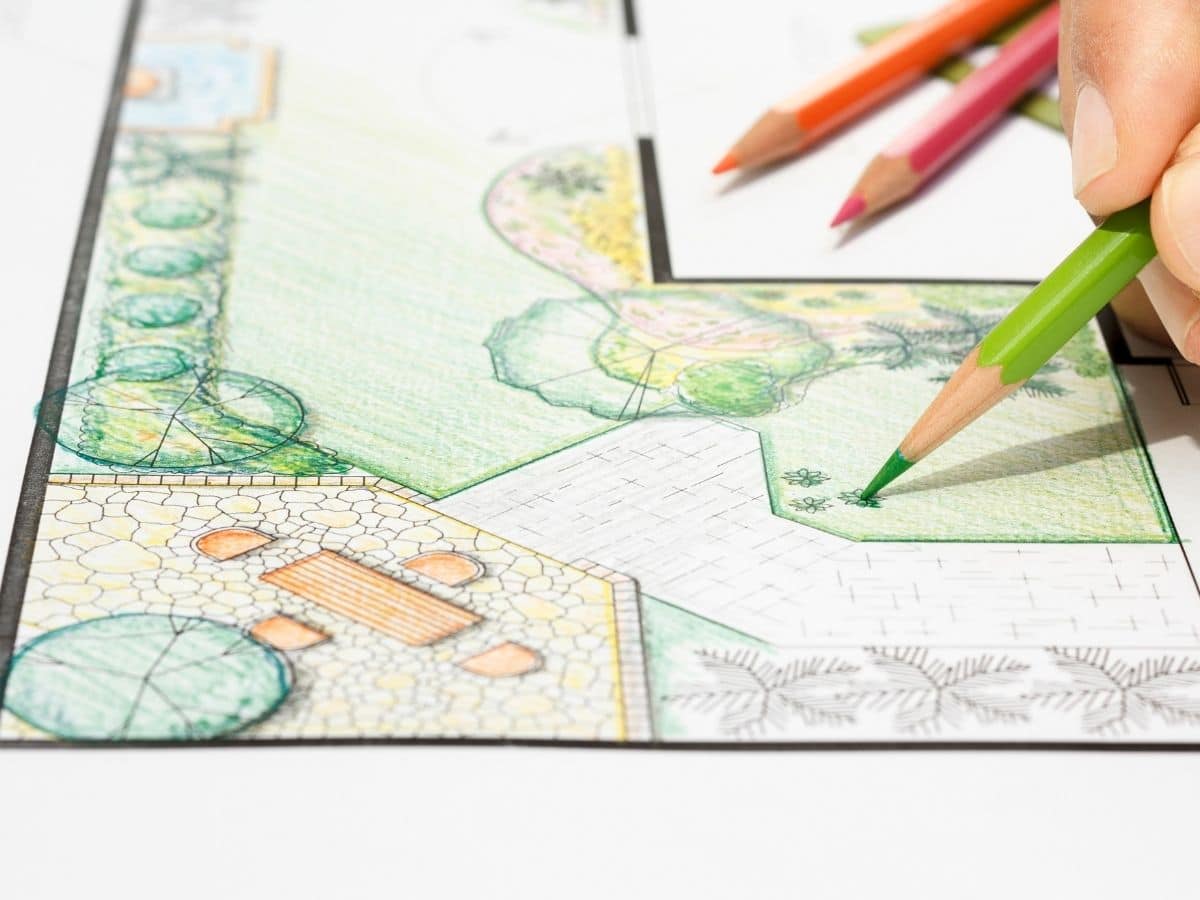
While planning each season’s garden I’ve always found it important to have a visual representation of my gardening space. This allows me to make notes on where I will be or have planted certain things. It also allows you to make notes of any trees or other things that might obstruct the sun.

How to Use the Garden Layout
- Keep track of shaded areas
- Mark where you’ve planted what
- Track damp areas
- Keep track of when that space will be cleared (or is expected to be cleared.)
- Give each growing area a name. Raised Bed 1, Herb Spiral, etc.
Garden Wishlist

The Garden Wishlist page is where you keep a wishlist of things you want for the garden. It might be a particular variety of sunflower that you absolutely fell in love with or it might be a VegTrug to grow strawberries in.
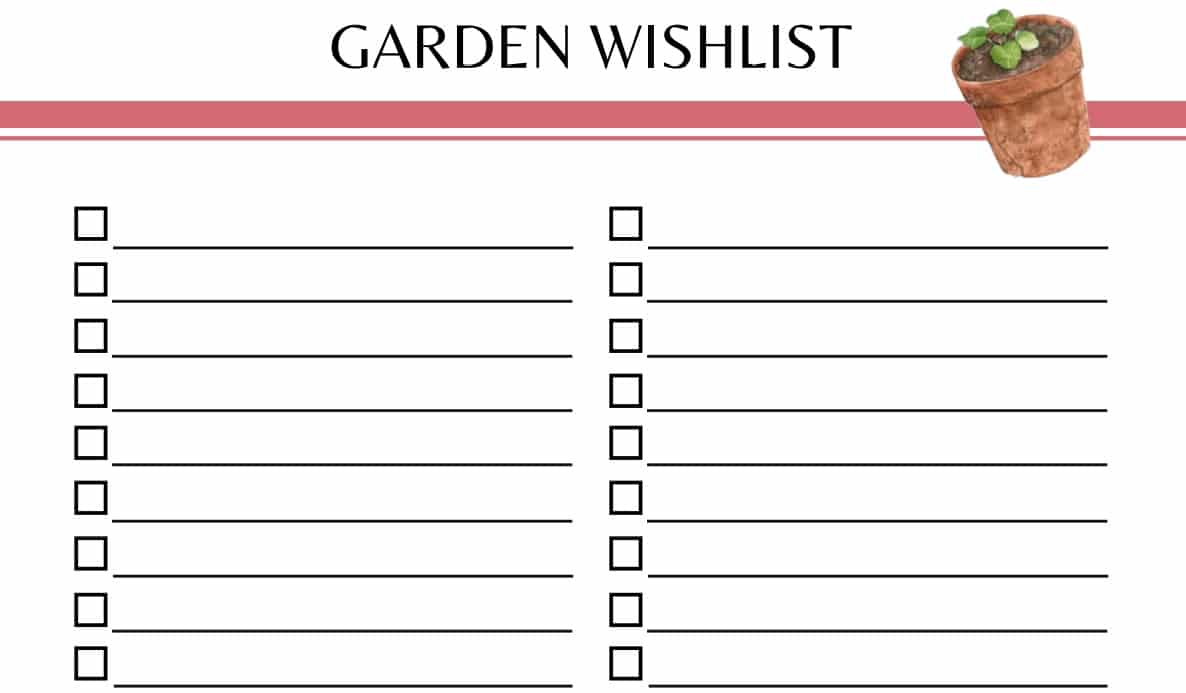
How to Use the Garden Wishlist
For the Garden Wishlist, I like to specifically focus on things I know I want this year. There is a wishlist section at the end for future years which I’ll touch on further down the article. For this garden wishlist, I like to write in three colors.
Green is for things that I absolutely 100% need this year, the must-haves. This might be new gloves or bags of compost for a new bed.
Orange writing is for the things that I would really like to have but I can live without it if budgets don’t allow for them. For me, things that might fall into the orange category include a new variety of carrots, something I’m already growing but another variety caught my eye. It would be nice to have those gorgeous red carrots, but the orange ones I’ve got in the ground already will suit me just fine.
Red is for dreaming big. The sort of “if I had a spare $500 just for gardening laying around this is what I would spend it on,” sort of things. This might include a new lawnmower or a seed sower. I also include decorative things in the Red category because for me the priority in the garden is making it functional, not making it pretty. Many things I write in red end up going back on the list the next year because I simply haven’t had the time or money to get them.
Seed Inventory
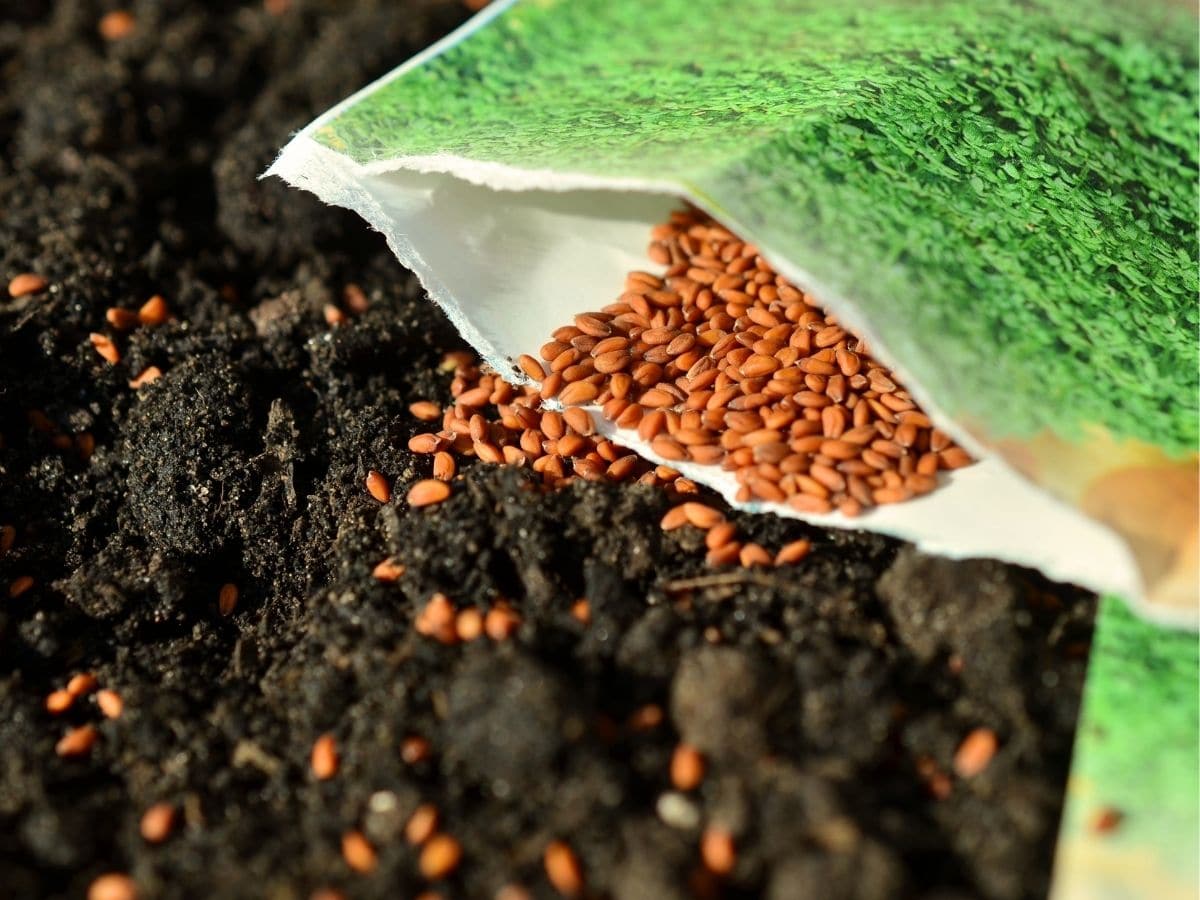
This is where you keep track of all of the seeds you have. It will keep you from buying more of something you already have. I wasn’t very good at this when I first started gardening and I ended up with two packets of chive seeds. If you’ve ever grown chives then you know one is far more than you will ever need, let alone two.
How to Use the Seed Inventory
Once you’ve put all the seeds you currently have on the list be sure to keep it updated with new seeds you buy, trade for, or harvest. When you run out of that seed cross it out. This will be a big signal to you that you need to buy more. If you do cross one-off and you don’t immediately need to buy more of them be sure to put the seed on your wishlist if you want to grow it again next year. Here’s how I recommend using the seed inventory page.
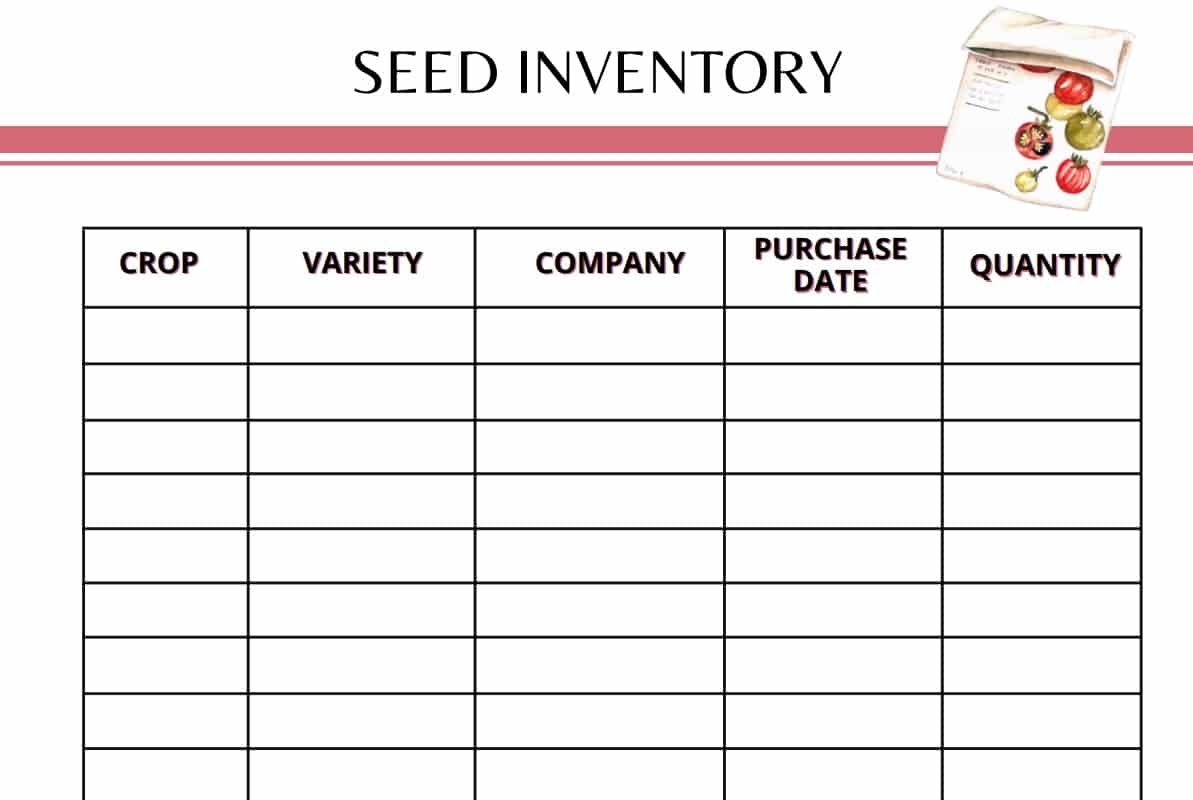
Crop
In the Crop section write down the exact variety you have. It’s not enough to write “Peas” and leave it at that. How will you know if you mean Sugar Snap Peas or Mangetout? Trust me, you won’t remember and this is why there is the section for variety. If you have both make them two separate lines. This means you may end up printing this page out a few times. I know I do.
If you want this is also where you can put the scientific name for the plant. It isn’t very helpful, but it is a cute little detail that some people enjoy having.
Variety
This is where you specify if you mean Sugar Snaps or Mangetout. Personally, I’ve got 5 varieties of peas. I usually only grow two each year, but I like to alternate what I’m growing. It’s important for me to know when I’ve run out of Sugar Snap seeds, they’re my favorite type of pea and I don’t save any of my own so keeping track of them is vital.
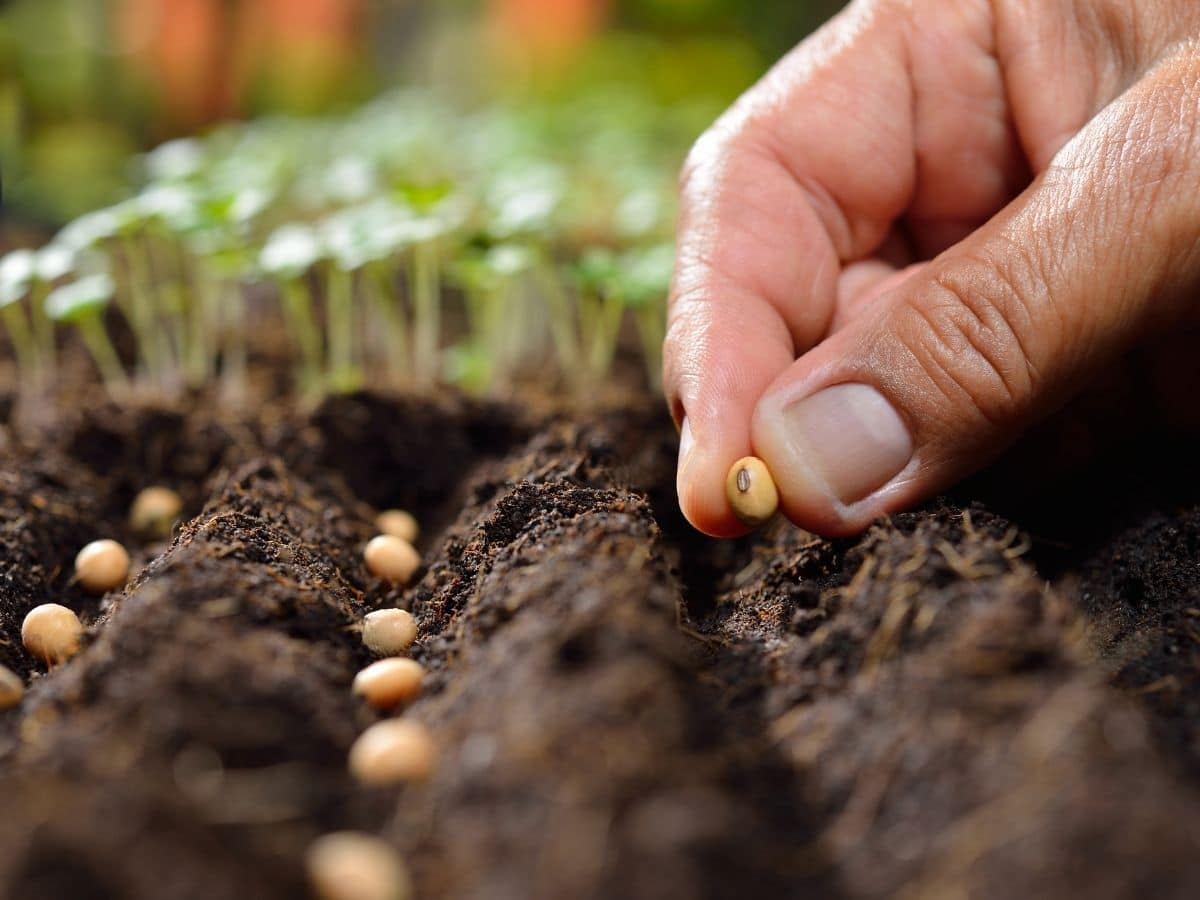
Company
This is where you write where you got them and what brand they are if that’s information you have. I will also specify if I ordered them online or went to the store in person. The more details I have about where and how I got them the more likely I am to be able to find more if I don’t save any seeds.
If I got them in a trade I will write down where that trade happened, be it a local seed swap event, or in a Facebook group, or even just trading with a neighbor. I will also put the name of the person I traded with if that’s something I know. Again, so I can go back to them if something comes up.
Purchase Date
For some having the purchase date is important information. Others don’t worry about it quite as much. Personally, I prefer to write down the date listed on the package for when the seeds won’t be as effective. I don’t throw the seeds away when they reach that point though. It’s just a guideline so I know out-of-date seeds might need double the amount of seeds sown.
Quantity
Finally, there is quantity. Now, depending on when you start your journal this number might be how many seeds you have right now before you start planting, or it might be how many seeds you have that will be used for the next year. If you are starting your journal before you plant, write down how many seeds you have now then cross that number out and update it after you’ve done your planting for the year.
Seed Starting Tracker
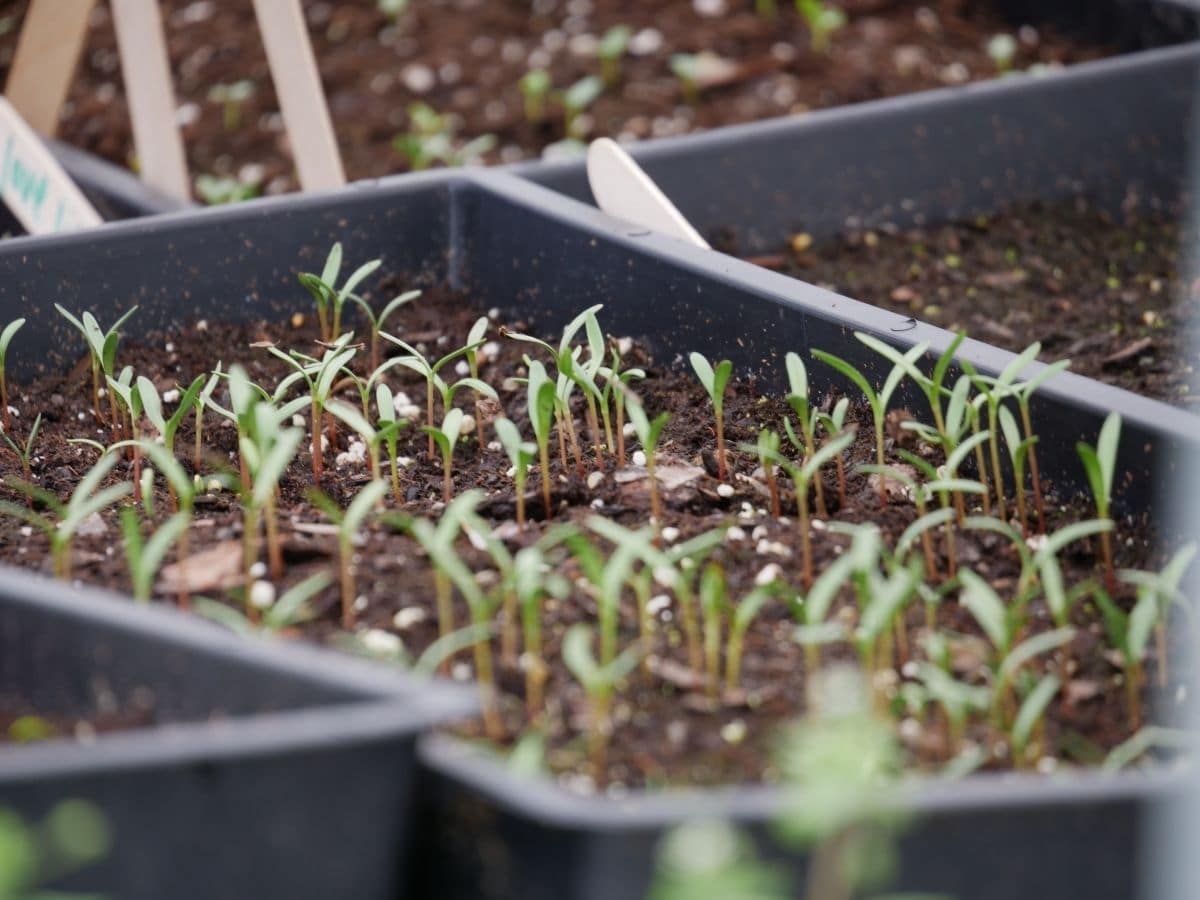
When you start planting your seeds it’s important to keep track of what you’ve planted and where. This is especially important if you’re starting a lot of seeds at once or a lot of different varieties of one plant. When they’re small it’s impossible to tell the difference between a Bell Pepper and a Ghost Pepper for instance. And above ground, all potato plants look the same. It’s not only about where something is planted either.
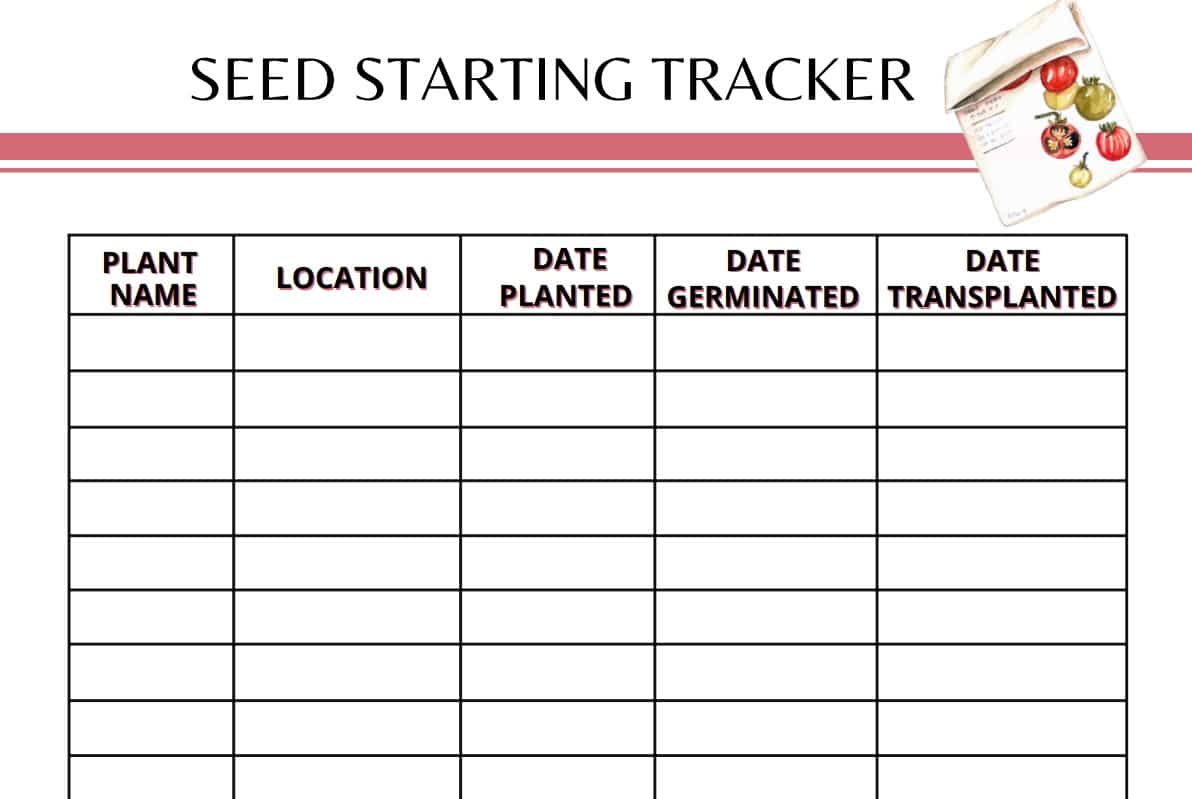
How to Use the Seed Starting Tracker
The Seed Starting Tracker will help you whether you are direct sowing or starting seeds indoors. The detailed information will help you plan for next year’s seed starting better prepared.
Plant Name
Keep track of both the plant name and the variety here. If you are growing from two different packages of plants you might also want to make a note of that and include things like brand if they are different brands or years if the packages list two different years. This way if something goes wrong with one you know which packet of seeds had the problem.
Location
This is simply where you sowed the seeds. Some of my planters end up with names for various reasons. One, I call the cat swamp because my cats love to lay in it when it is bare dirt and during the winter it turns into a swamp. Another unique name I have in my garden is Handles, the 10 gallon plastic pot I grow potatoes in. So, if I’m writing down my Maris Piper potatoes in the seed starting tracker I will put “Handles” in the location section.
If it’s starting from seed indoors I might write down something like “2nd Rack, 3rd Shelf.” Then I just number all the racks and their shelves in my seed starting room. Some people will also put which cell tray they’re in or even number the cells in the tray. Personally, I just label all my seed trays so I don’t have to track that specifically.
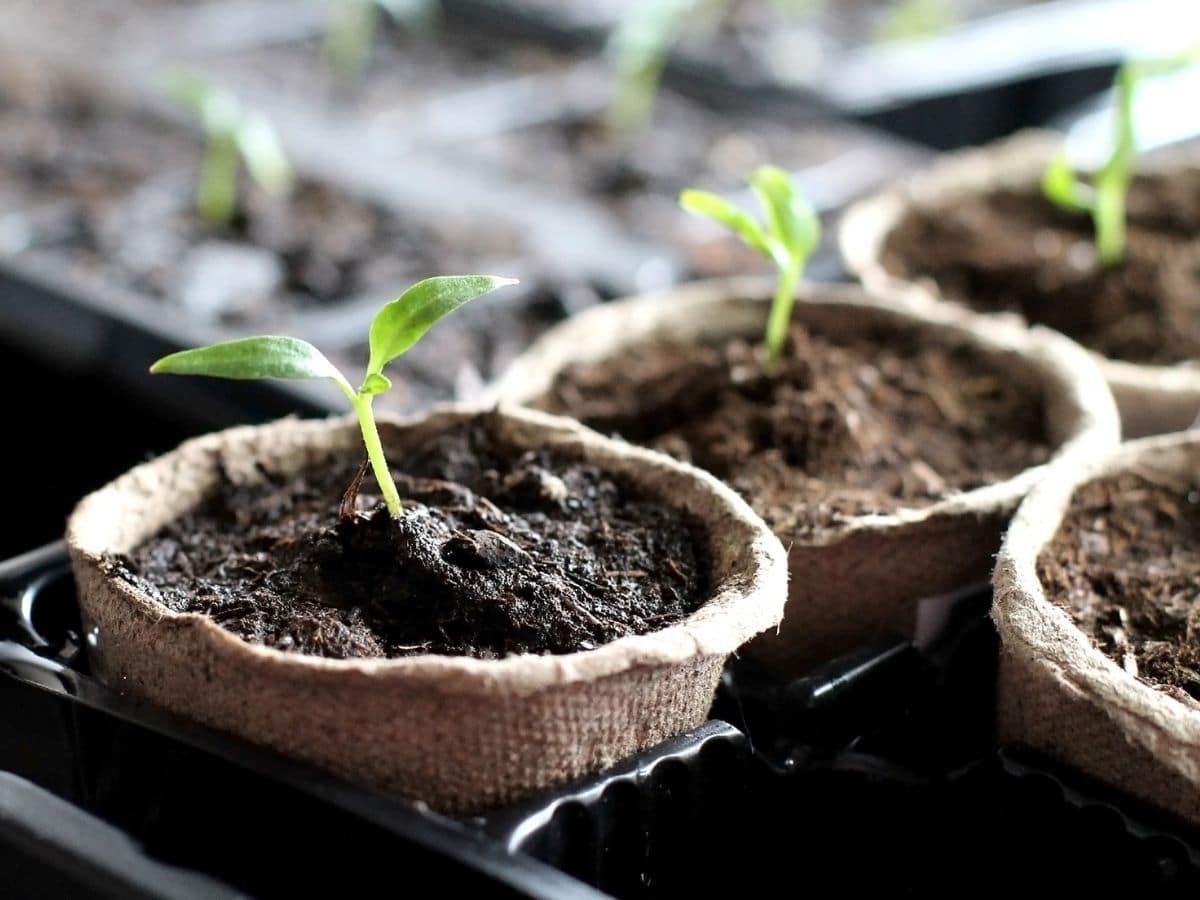
Date Planted
This is the date that the seeds are started, either in soil or in a moist container. It doesn’t include any soaking time that you might do for the seeds. Keeping track of this is important since you will want to know how long germination takes.
Date Germinated
Speaking of how long it takes to germinate, keeping track of when you start seeing those first little sprouts is important as well. It will help you know how early to start seeds next year. Next to the date germinated I also like to add the number of days that have passed since the seeds were sown. This way I don’t have to do the math more than once.
Date Transplanted
Finally, you will want to keep track of the date you transplanted your seedlings to their final spot. I also like to add a note at the end of what I was waiting for. Did I plant them too soon and need to wait for the weather? Was the weather good but your seedlings weren’t ready? These are important details to know for next year.
Seed Packet Information
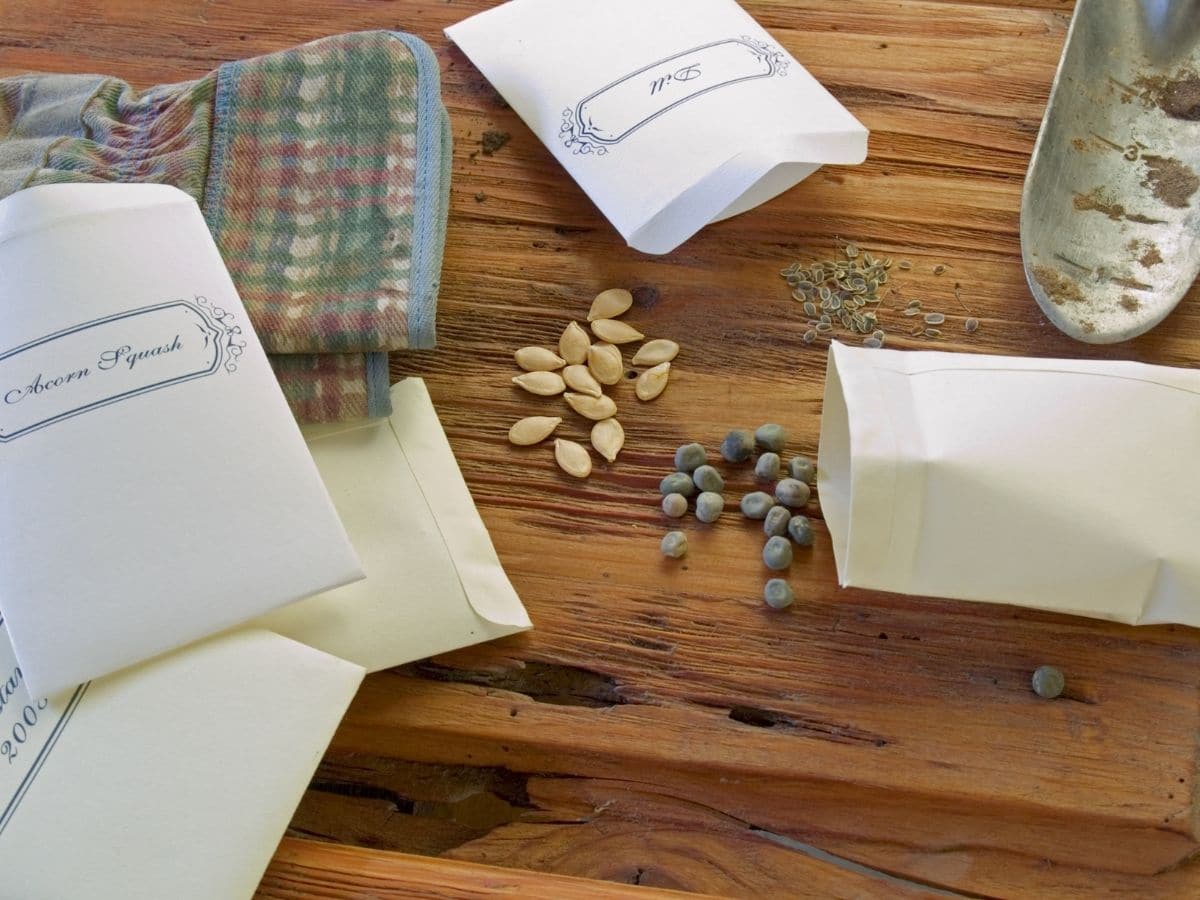
For some having information on individual packets of seeds might feel like it is a bit too much. But I know others who swear they can’t live without this level of detailed information. It’s entirely up to you if you use these pages or don’t.
Plant Name
By now, I imagine this one is pretty self-explanatory. Put the name of the plant, including the variety. I also like to add F1 if it is an F1 so I know if I can save seeds from it or not.

Date
This is the use-by date that should be found on all commercial seed packets. If you traded the seeds or have saved them yourself then write down the month you harvested them and add a year or two. Just keep in mind that the older seeds get the less likely they are to germinate. Though it isn’t impossible! I have seen 80-year-old tomato seeds germinate.
Season
The season is which season they grow in. Are they a spring crop? Do they need to overwinter before you can plant them? This is where you make those notes!
Notes
Anything else you might think is important to know about a particular packet of seeds should go here.
Planting Schedule
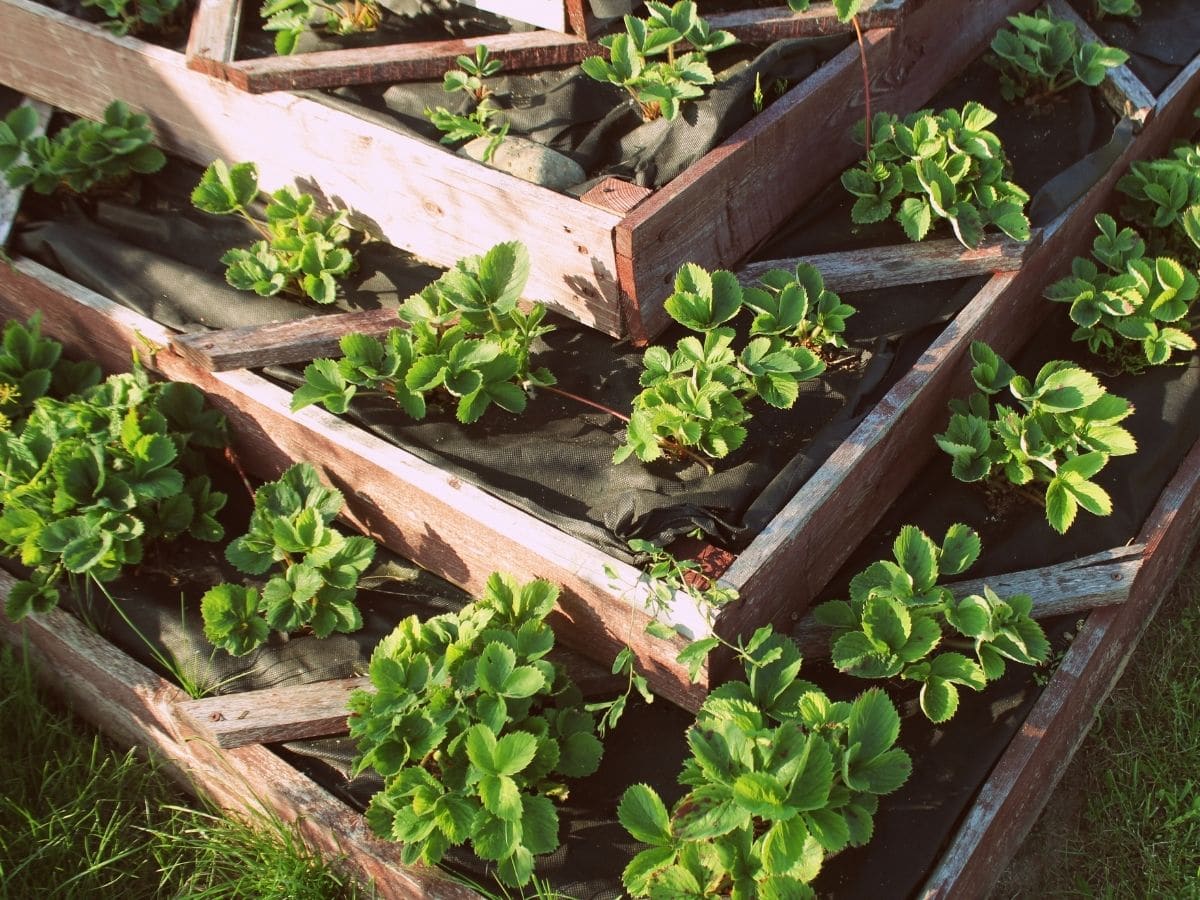
The Planting Schedule is in my opinion one of the most important pages when it comes to planning your garden. How are you supposed to know when is a good time to plant for your area if you don’t save that information?

- Plant: The name of the plant. This doesn’t have to include the variety for most crops. One exception would be potatoes which have different starting dates depending on the variety.
- Month: This is where you mark off which months you can plant them in. There will typically be a few months stretch for most plants. You can also mark on there when the harvest season is for the plants. This information is often found on seed packets.
Seasonal Gardening Tasks
The section of Seasonal Gardening Tasks is where you keep track of things that only need to be done once or twice a year or maybe even once a season. Below I’ve included a few examples of seasonal gardening tasks you might want to keep track of.
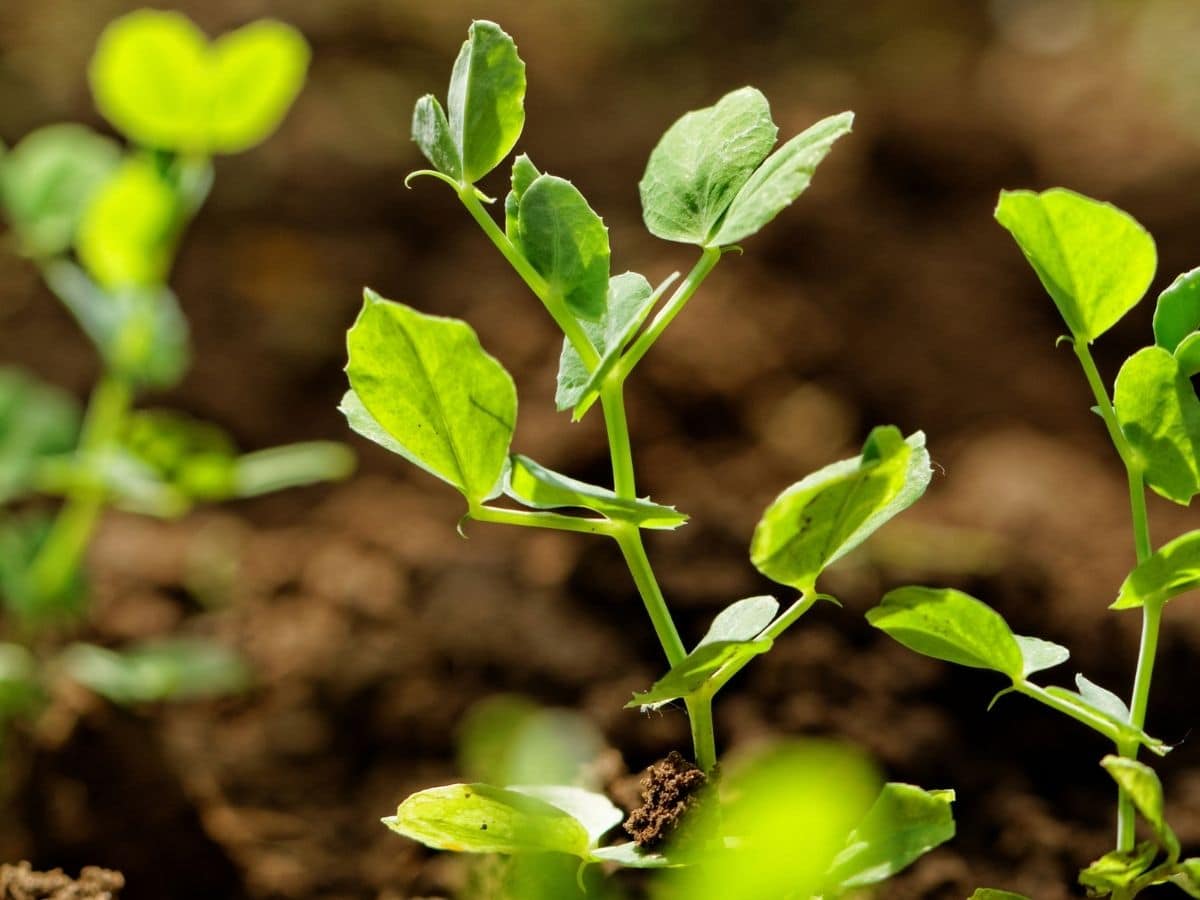
Spring
- Test Soil pH Levels
- Mulch Beds
- Set Up Bird Bath
- Repot Houseplants

Summer
- Check most pest susceptible plants daily
- Watch for disease in plants from the heat
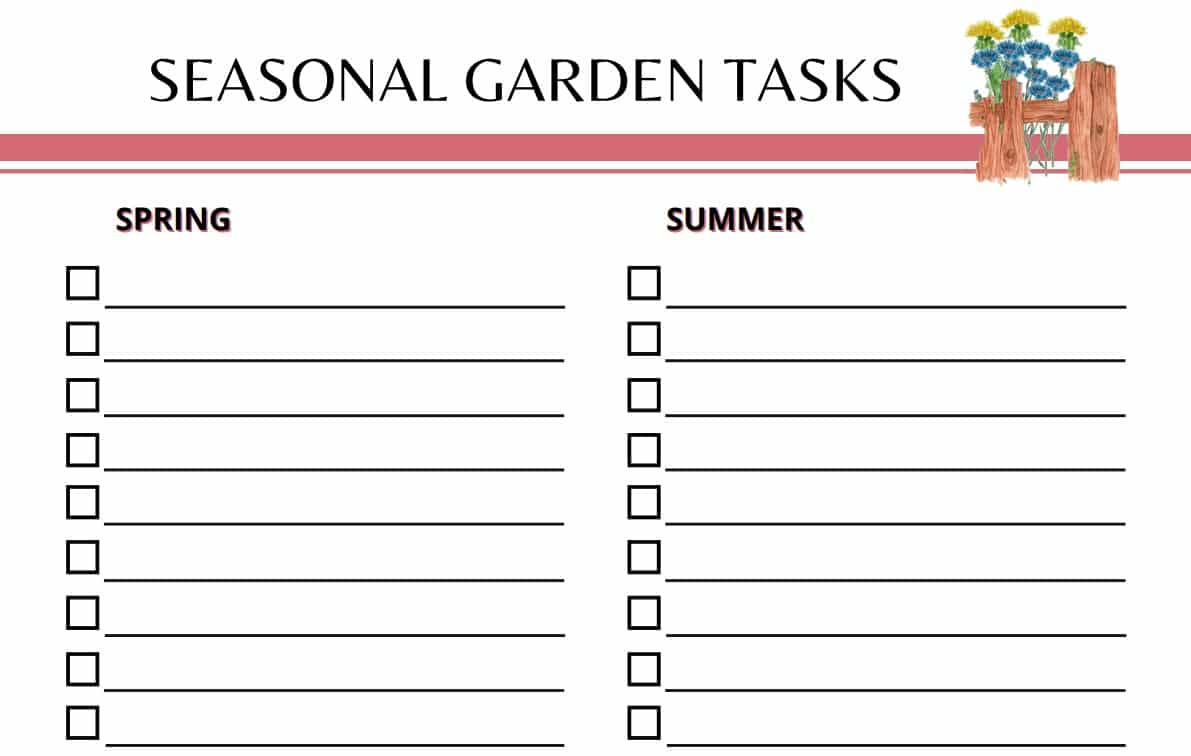
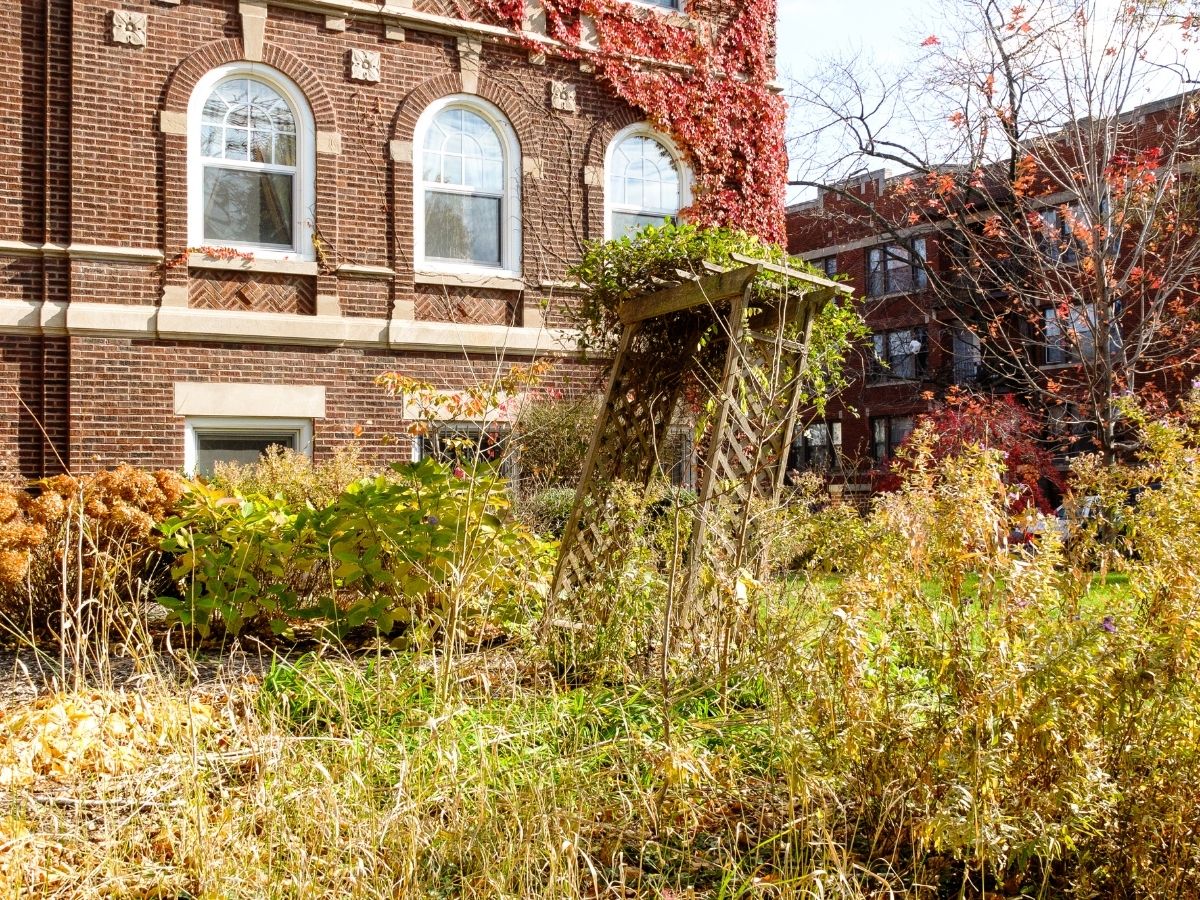
Fall
- Create New Garden Beds
- Prepare Garden for Winter
- Set Up Cold Frames
- Take Cuttings from Plants
- Transplant Plants You Want to Overwinter
- Winterize Irrigation System
- Wash and Store Flower Pots

Winter
- Order Seeds
- Prune Roses
- Repair Fences
- Sharpen Tools
Monthly Garden Tasks
Get even more granular by taking a look at tasks that need to be completed in specific months. In a future article I’ll cover this in more detail, but for now, here are a few ideas for things you might include in your task list every month.
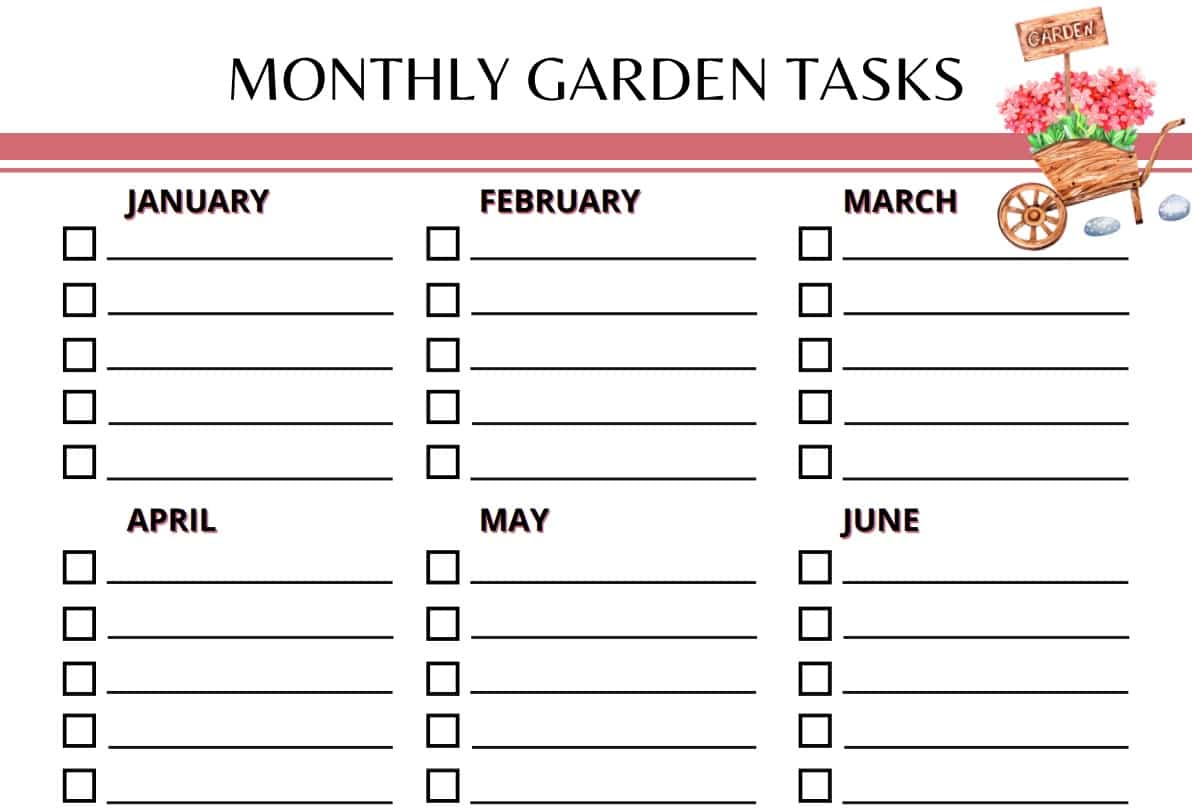
January
- Dig Beds
- Plan the Garden
- Plant Roses
February
- Prune Shrubs
- Trim Hedges
March
- Remove Weeds
- Prepare garden for pests
April
- Feed the Lawn
- Clean Up Flowerbed
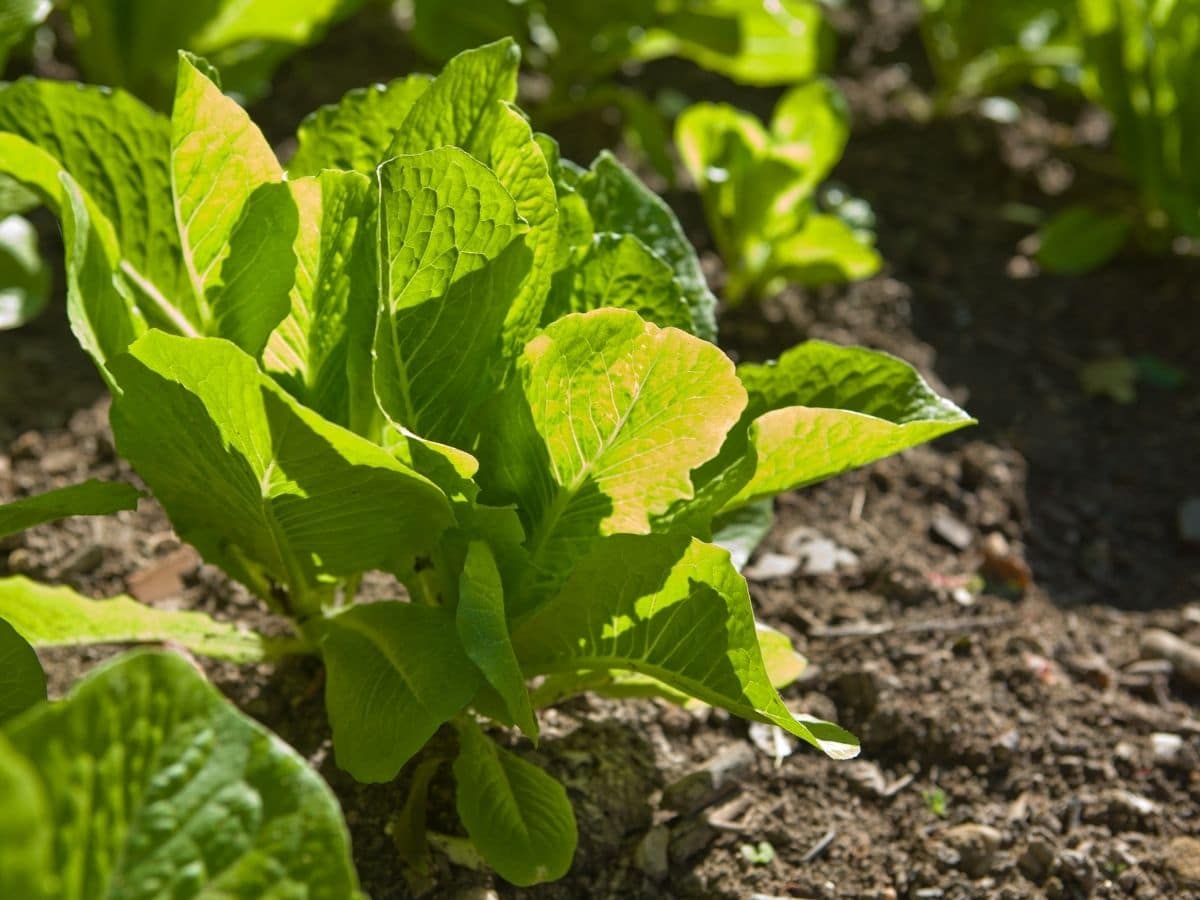
May
- Harden off Peppers
- Give the peas supports
June
- Take Rosemary Cutting
- Fertilize everything
July
- Deadhead flowers
- Cut Back Raspberry Canes
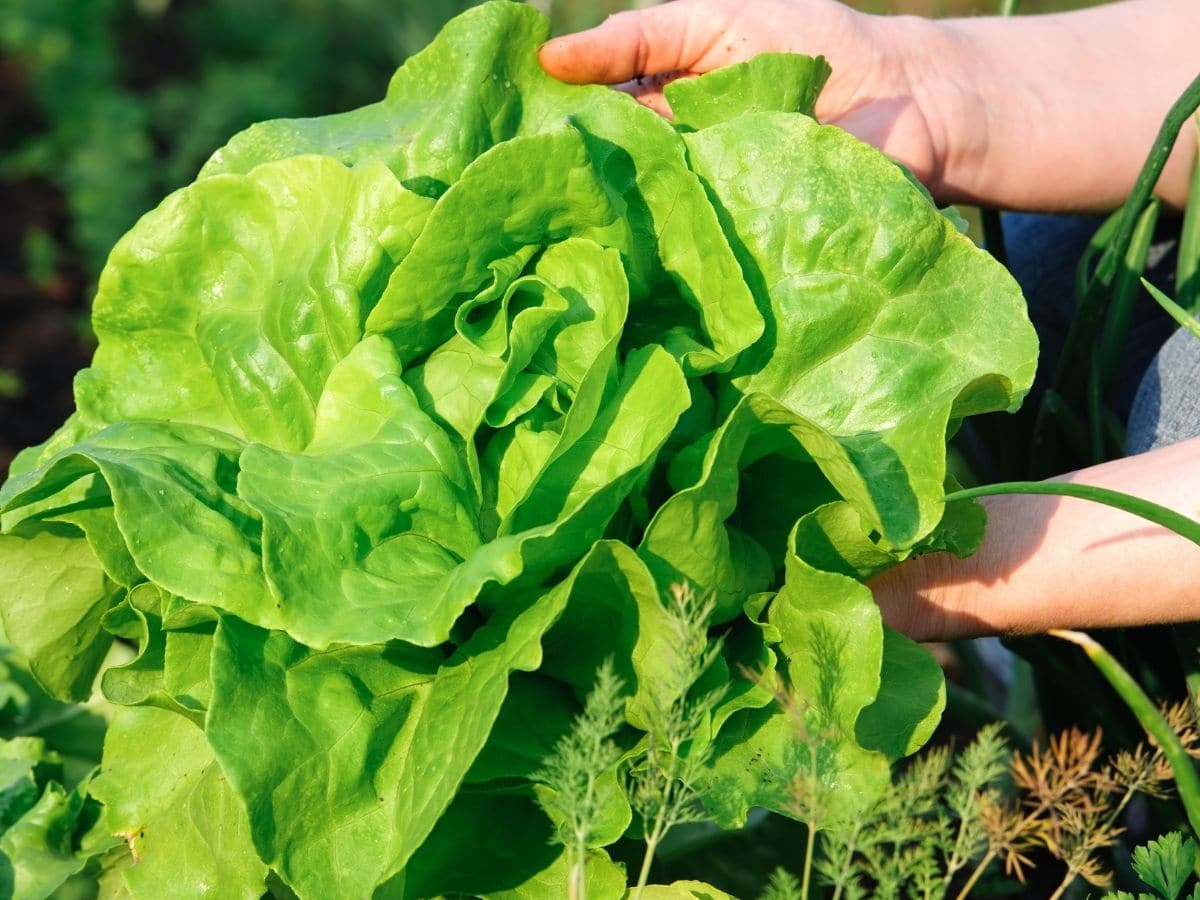
August
- Plant Spring Bulbs
- Blanch Endive
September
- Clear dead and dying crops
- Remove shading from the greenhouse
- Pot Chives to move indoors

October
- Insulate Greenhouse
- Remove moss from grass
- Mulch fruit trees and bushes
November
- Prune soft fruit trees
- Turn compost heap
December
- Order seed catalogs
- Clean Lawnmower
Weekly Garden Tasks
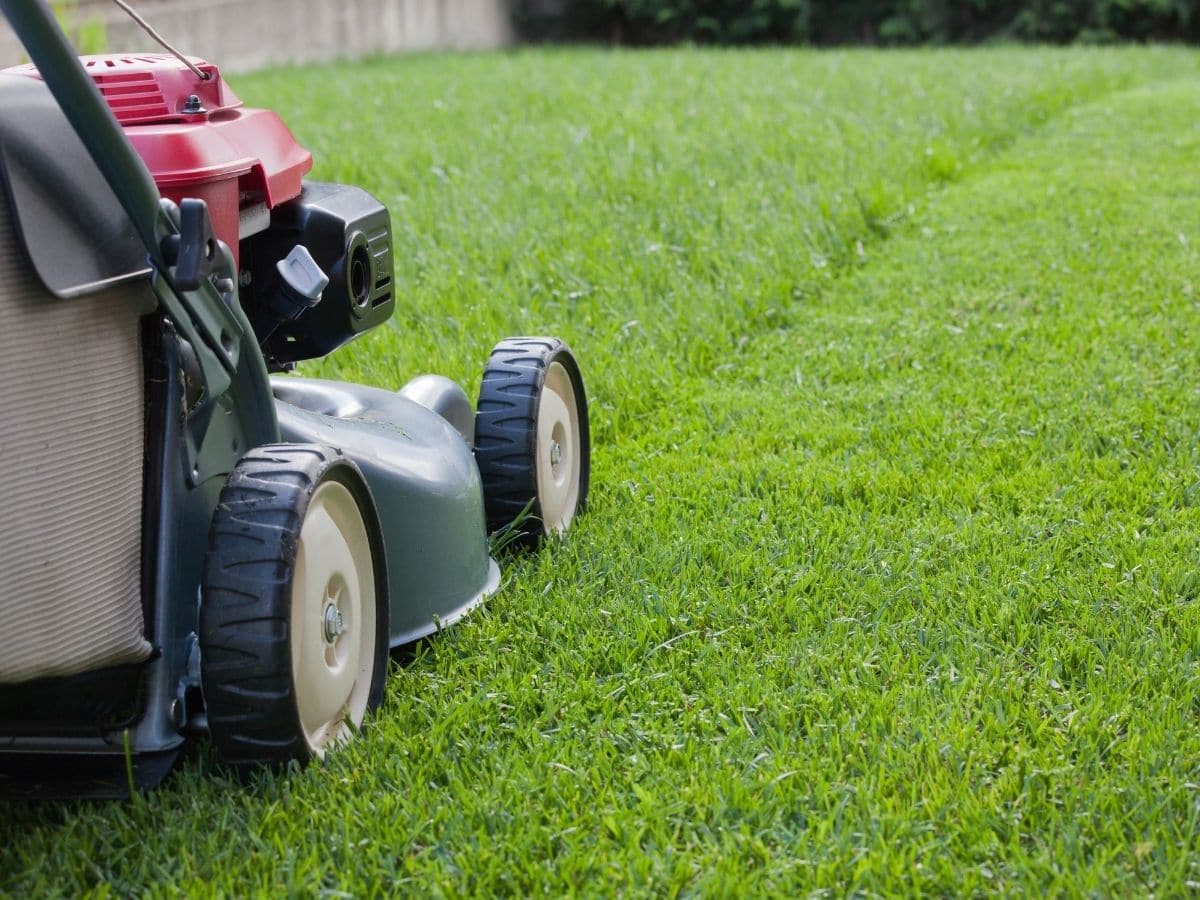
Once you have an idea of the things that you need to do seasonally and even monthly, it’s time to create an action plan and that’s where the weekly garden tasks page comes in. It will help you plan ahead and serve as a living document for you to look back on for years to come.
Personally, I like to print out enough for the whole year all in one go so I can start assigning some of those seasonal and monthly tasks right away. It can also serve as a great reminder of when you’re supposed to water, fertilize, or even plant certain crops.
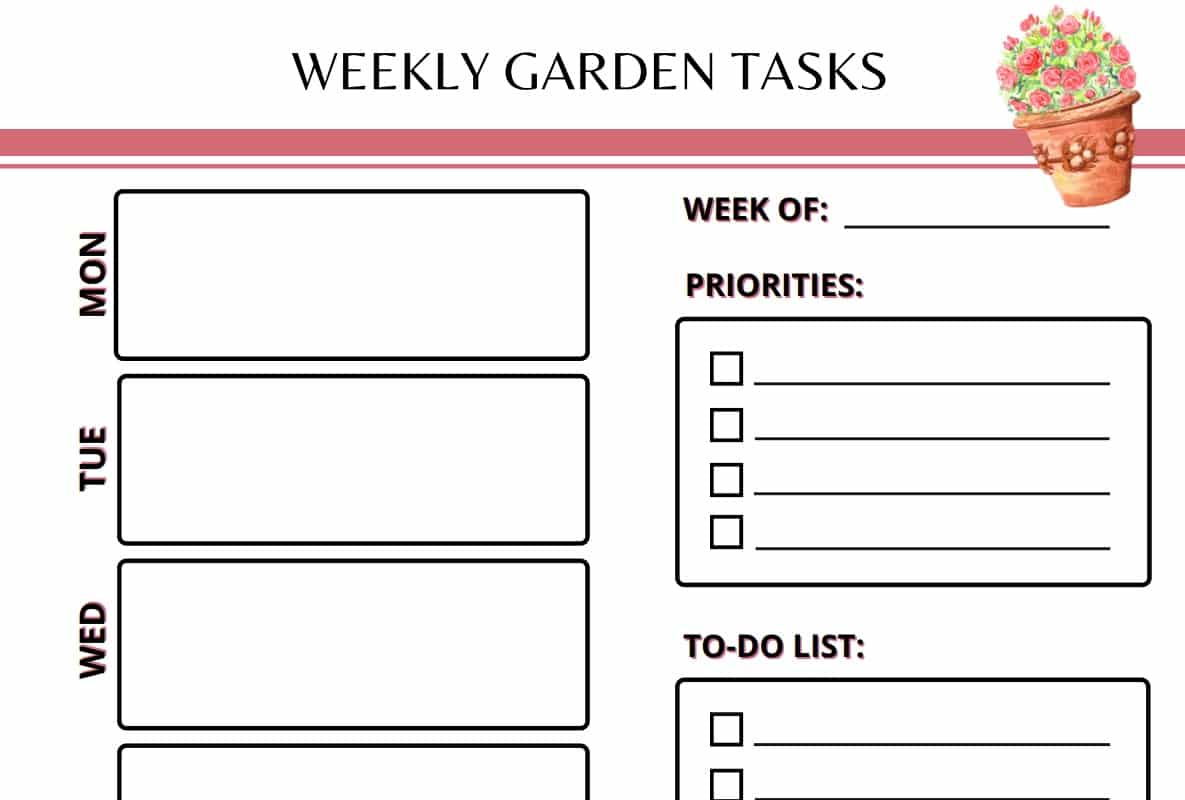
Days of the Week
In this section on the left, you write the tasks that need to be completed on certain days, or days that you have assigned them. Some plants might only need watering every 3 days. Don’t rely on your memory to keep track of that, write it down.
Priorities
I also like to keep track of my priorities for the week. This doesn’t include the tasks that I always have to do like watering. Instead, it can include things like weeding or specific pruning jobs. I like to give myself a few “this MUST happen this week” tasks each week.
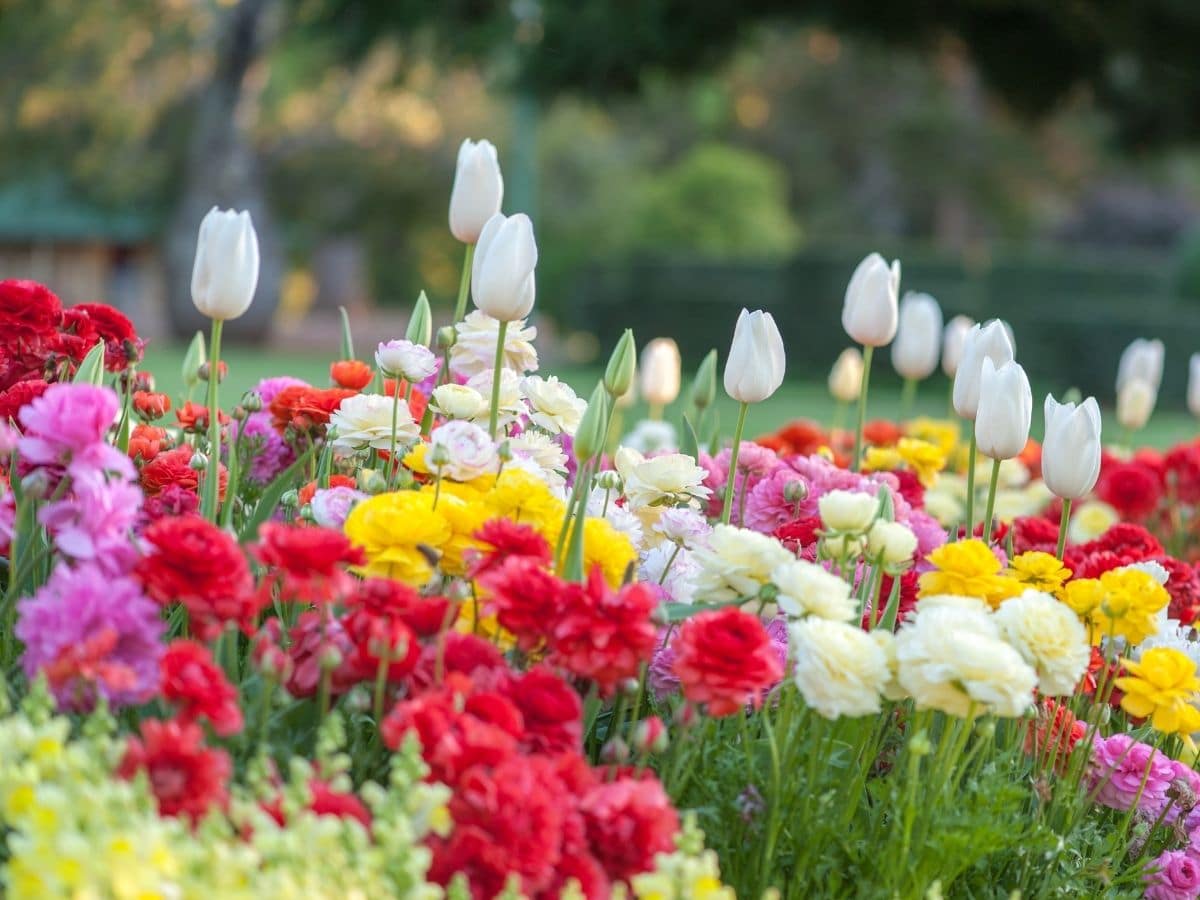
To-Do List
The to-do list is similar to the priorities list except that it isn’t as urgent. It might be getting a head start on something that doesn’t need to be finished until 3 weeks from then or it might be one of those “if I have time…” tasks.
Notes
In the notes section leave yourself any notes you might have about the week. Think of it as a mini journaling task where you fill in what happened, if it rained a lot, or if something bloomed for the first time. These little notes are great to look back on after the gardening season is done.
Weekly Garden Maintenance
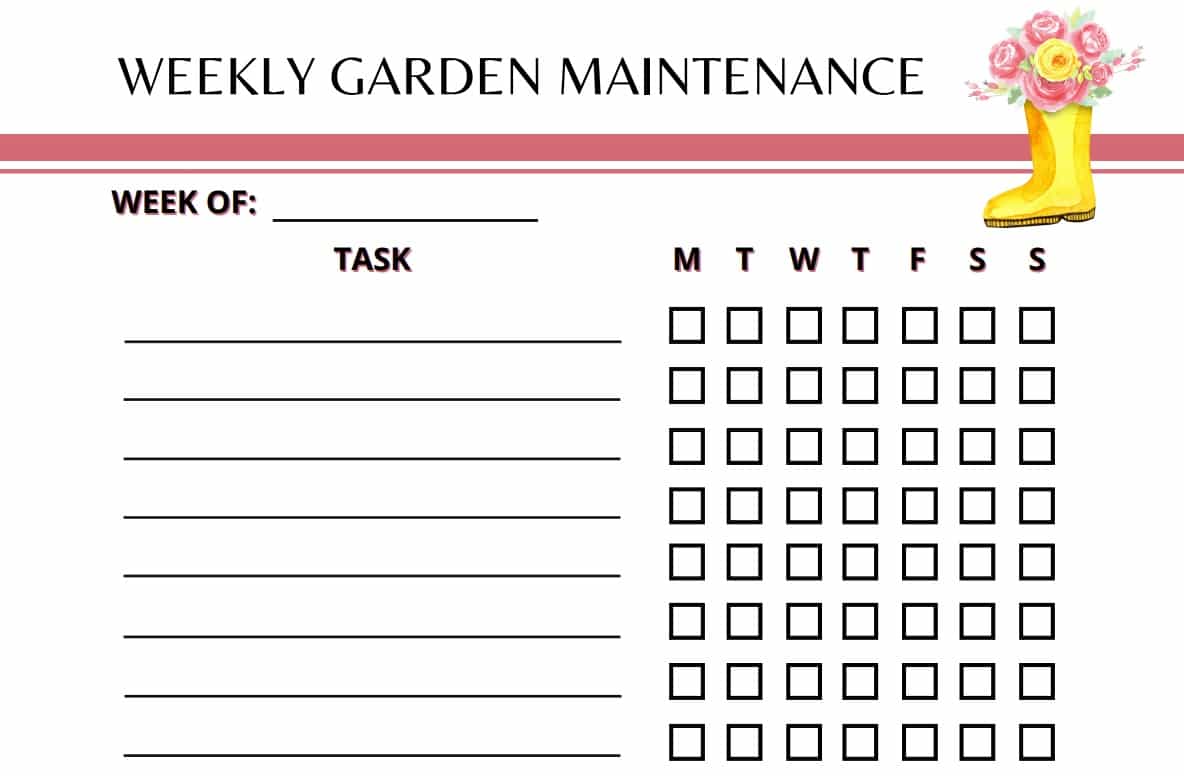
The Weekly Garden Maintenance page is your checklist for tasks that need to be done every week. Check off the days that you have watered, weeded, or cleared out the debris from the pond. If you want to mark when the task needs to be done as well as when you’ve done it then mark the days the task needs to be completed with a highlighter. Then when you’ve done it cross out the square or leave a checkmark.
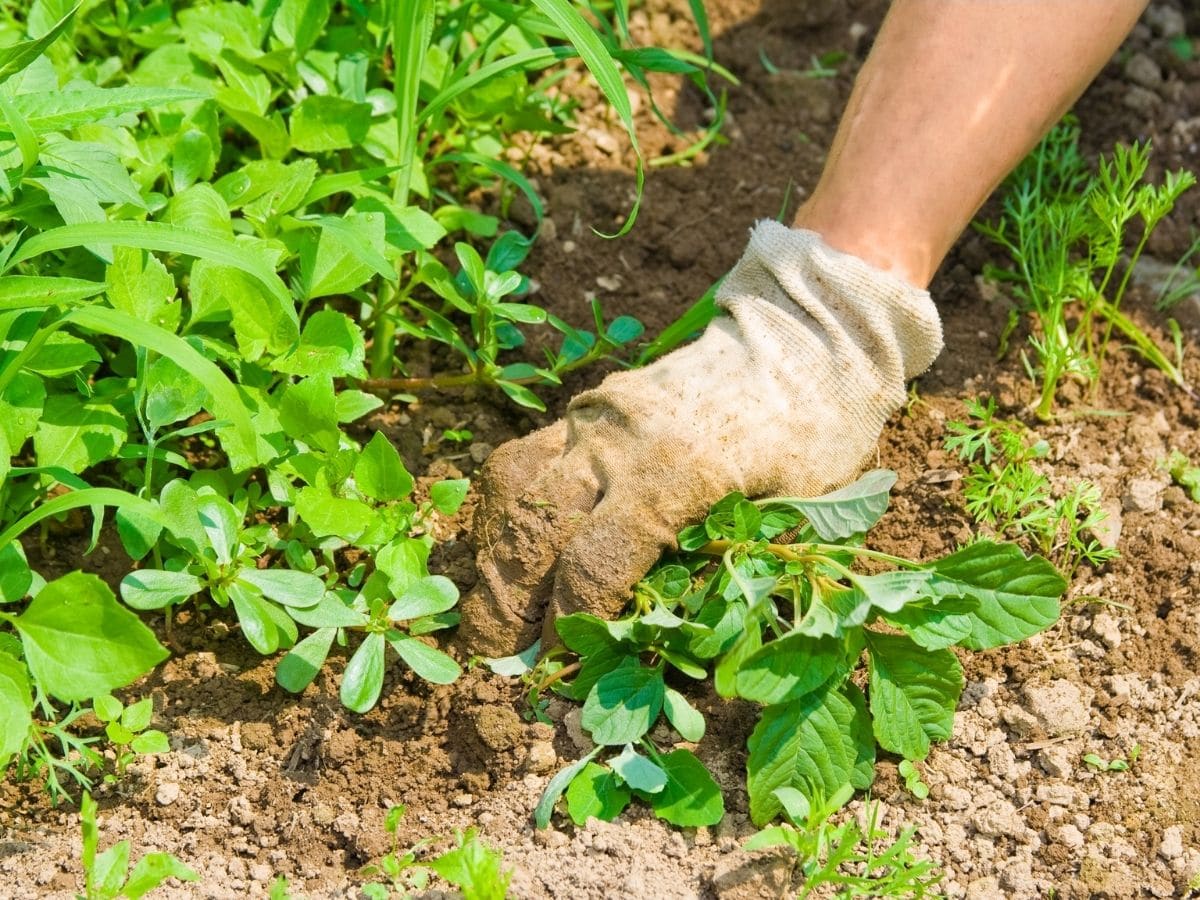
Plant Care Notes
The plant care notes are the area of your garden journal that is going to get the most use. It will provide a detailed account of what plants you have and how to take care of them. Don’t just include the outdoor plants either! This is great to use on houseplants too.
This reference guide has saved my garden many times. Whenever I plant something new I will immediately go online and get all the information for that new plant. So if there is something going wrong with it I can quickly find out what it might be.

Plant Name
I’ve found that it is important to know the name of the plant, including the variety since different varieties and have different pest concerns. I also like to write down if the seeds are organic or not, and which company I got them from.
Date Planted
Knowing what date you planted your plants is important for knowing if your plant is growing well, if it’s close to harvest, and if you should plant some more of that type for a second crop later on. When I start succession growing I will differentiate between the plants on the tag with the date they were planted. This way I know the difference between carrots I started two weeks ago and carrots I started today.

Water
In the water area, you should talk about their watering needs. Do they need to be watered twice a day? Or maybe it’s only once every 3 days. Do they like wet roots or are they prone to root rot? You might even put what time of day you water that plant. The way I like to think about this section is that if I handed my planner to my neighbor who doesn’t garden at all, does he have enough information to water my plants while I’m on vacation? If not, then I keep going until he knows everything he might need to know.
Sunlight
The neighbor trick doesn’t work as well with sunlight since they are unlikely to be moving your plants for you. But it is still important for your future self to have these things written down. Does the plant want direct sunlight? Indirect? Does it prefer to be in the shade or get a full day’s worth of sunlight? Write down all of the sun requirements for that particular plant so that in the future you can plant it in the perfect spot if you ever grow another.
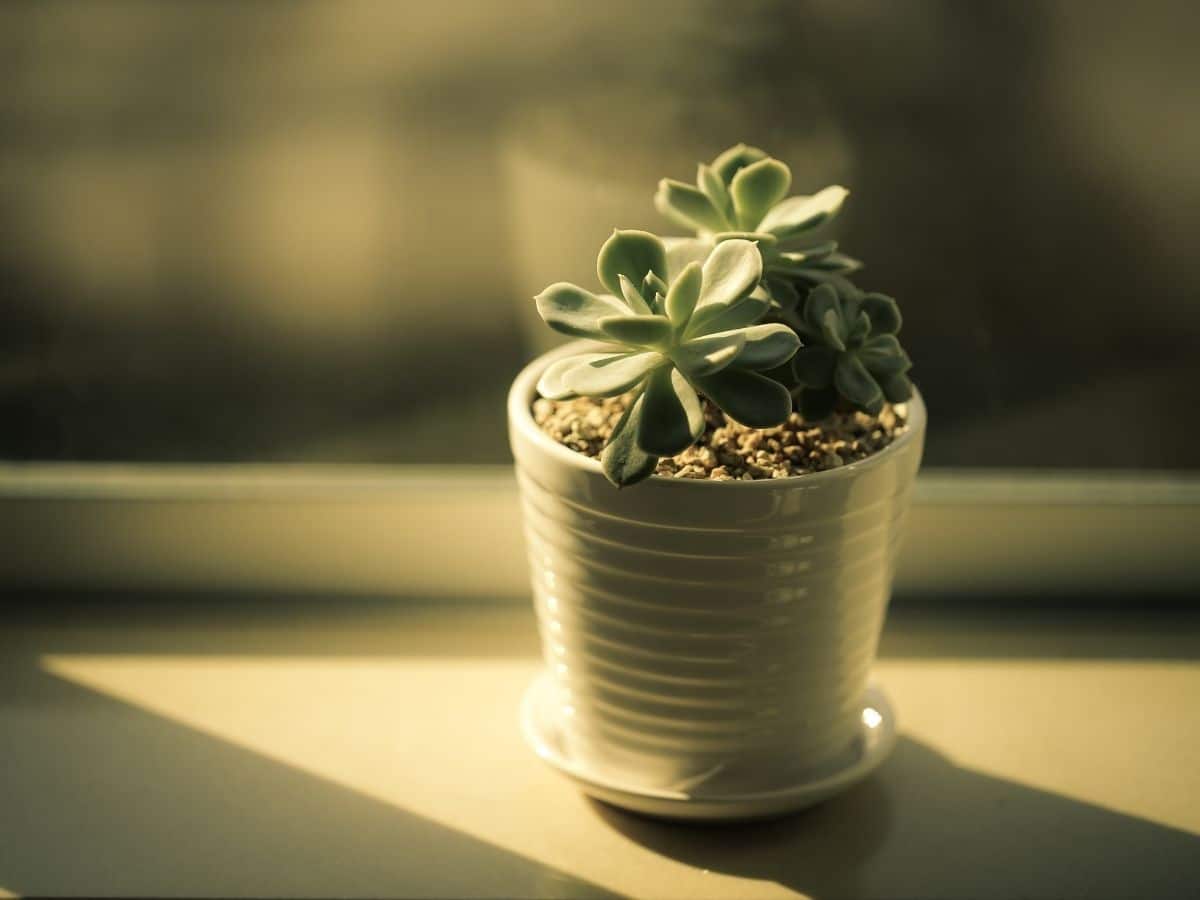
Temperature
Knowing the right temperature for your plants might be one of the most important bits of information you could have about your plants. It will inform where you can plant it and when. Will it do well in a freeze? I also like to make a note here of plants that I will put in a pot and bring inside for winter.
Fertilizer
How often does your plant need to be fertilized? Which fertilizer do you use on it? How much fertilizer do you use? These are all questions that should be answered here. I like to include the brand name as well as where I got it, so I can always get more quickly.
Pests
Knowing which pests are most likely to attack your plants isn’t something you know intuitively, it’s something you have to learn. What better time to learn it than when you’re putting together this planner? No, you won’t be able to include pictures, but it is good to know where to start when you do your search for the cure.
Notes
This is where you put anything else you might want or need to know about your plant. I use this section for comments and observations I’ve made about the plant in previous years.
Monthly Watering Chart
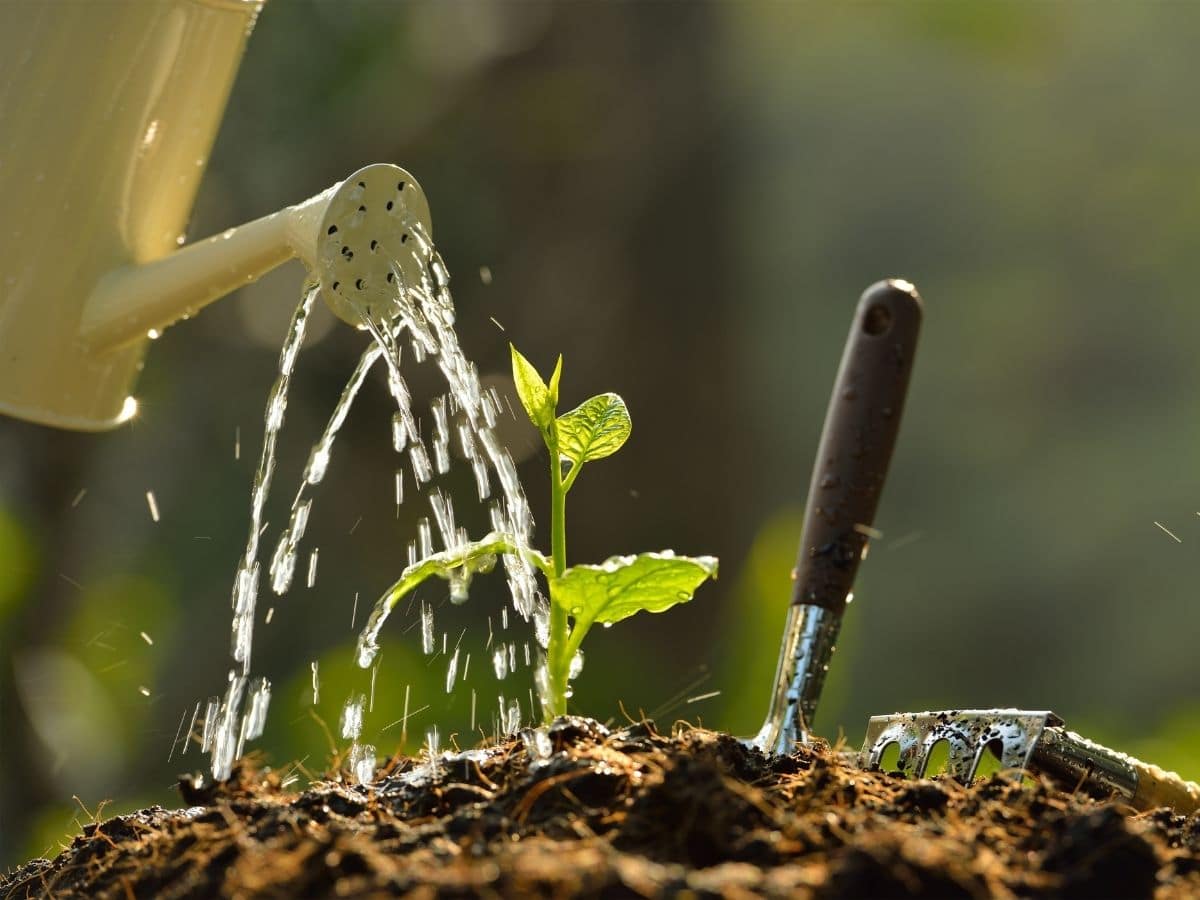
This page of the gardening planner lives on my fridge. This way I always know which plants need to be watered today. It also helps me keep track of what day it is as I mark off each day’s watering when I’ve done it. I have a friend who keeps two watering charts, one for houseplants and one for outdoor plants.
How to Use It
Here is a simple guide on how to use the Monthly Watering Chart. Or at least how I use it, your mileage may vary.
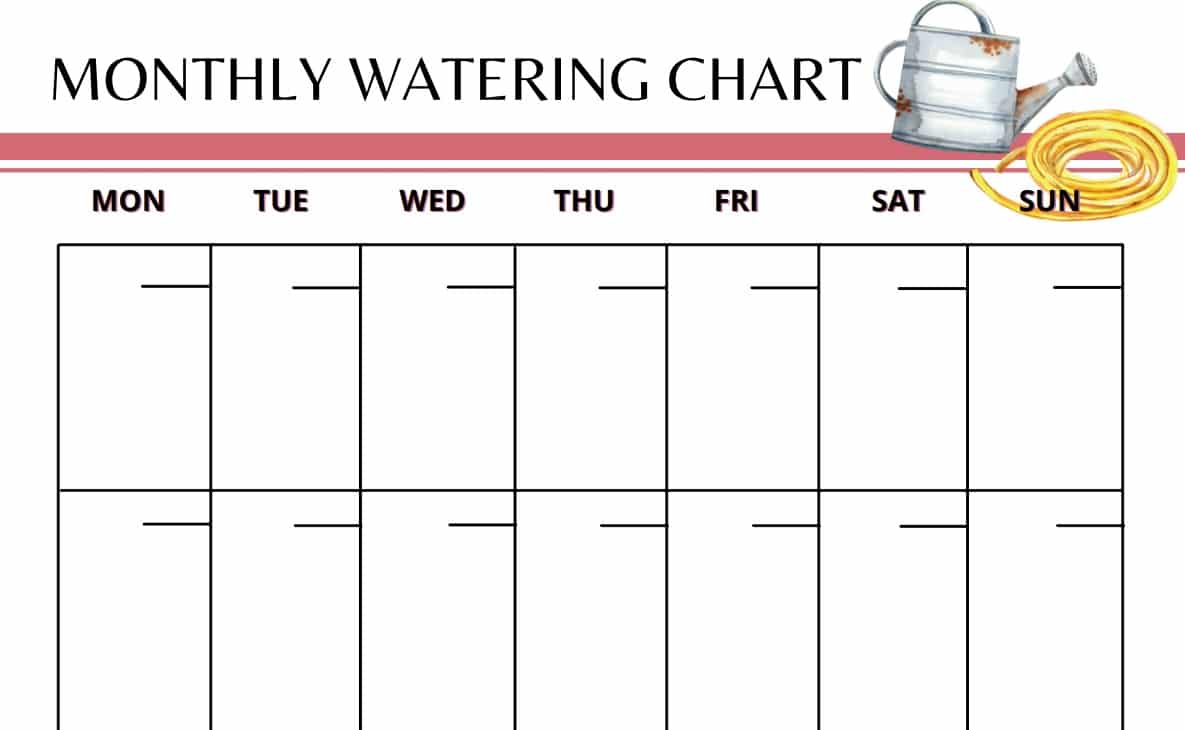
Naming Conventions
In each day’s square write down what needs to be watered. It might be an individual plant like the “Living Room Monstera” or the “Bathroom Fern” or it might be the “Strawberry Bed” or “Hanging Baskets.” The important thing to do here is to be as specific as possible without being too specific.
You don’t need to list every plant in a planter if you need to water them all. This is where naming specific areas you’re growing in comes in handy. If my instructions say “Water Handles” then I know exactly which container I need to water that day.
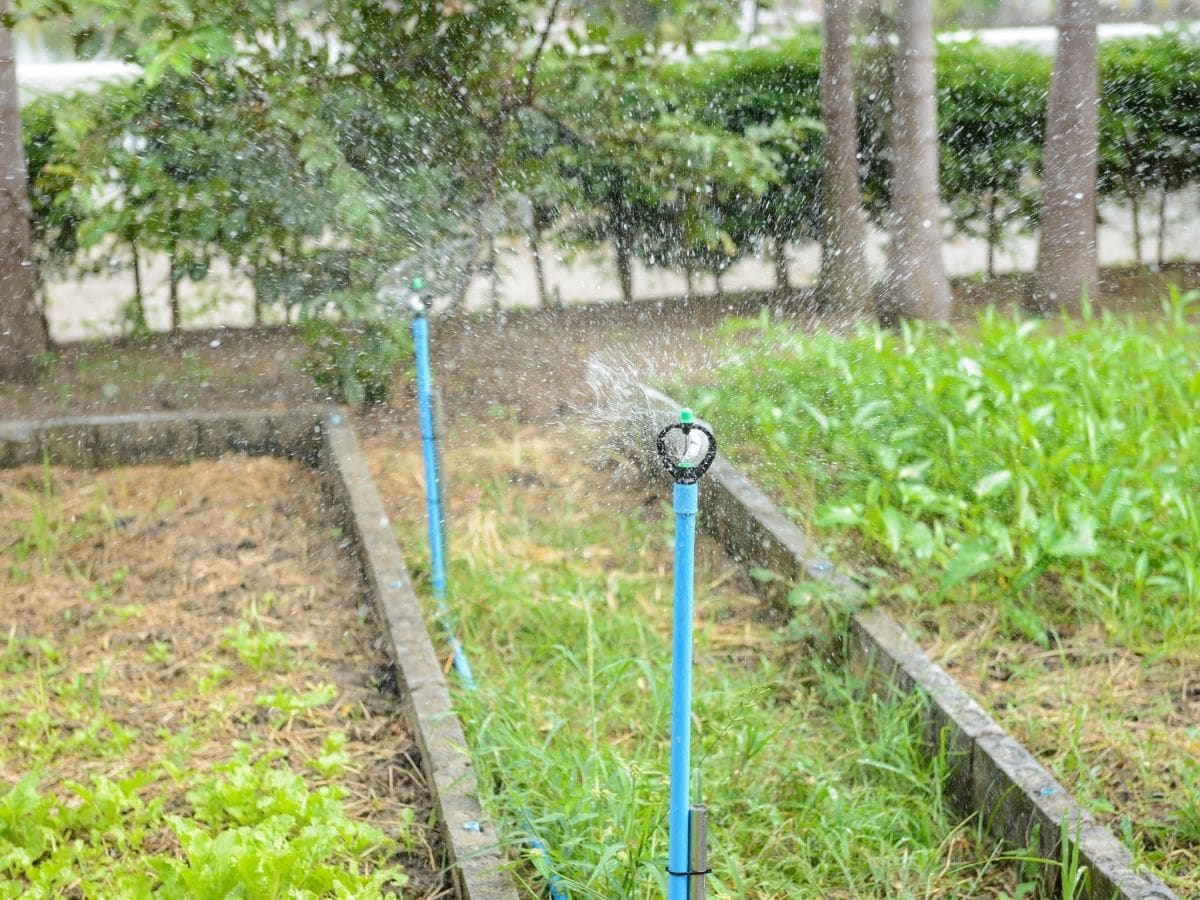
How Often You Should Water
How often you water a plant will depend on a lot of different factors including, temperature, plant water needs, and when it last rained. All of this information will make it a living document, so I recommend writing in pencil because your watering plans will change.
When to Fill It In
When you fill in your watering chart is a bit of a personal choice. I like to fill in the plan for the next month at the end of the current month and then make changes along the way as needed. But, you could also fill it in once a week. Use whichever method works best for you.
Check off Completed Watering
When you’ve finished watering for the day check it off on the chart so you know that you’ve already done it. But, don’t make it so you can’t read what the entry says. You can use this chart for next year to act as a baseline to start with. Just make sure you write it down when it is rain vs when you watered it yourself.
Harvest Record
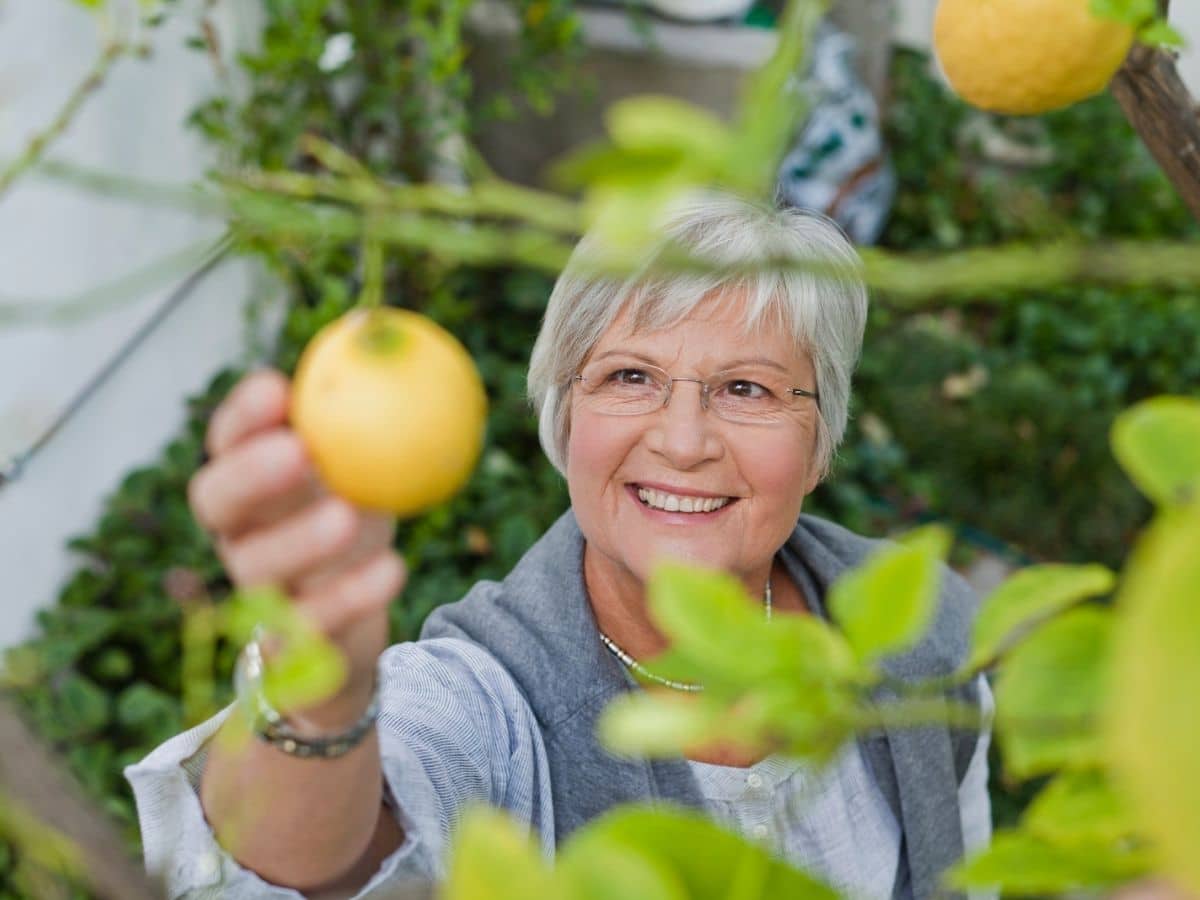
This is possibly the most exciting part of the whole garden planner, it’s where you get to see the fruits of your labor! I like to have two versions of this page. The first is updated every time you harvest anything. Then the second is a total for each type and variety of plant at the end of the year. So I know exactly how many pounds of gem corn I grew and how many plants grew it.
Date
This is the date you harvested the plant on. On the total sheet, I replace Date with the number of plants of that variety that I grew.
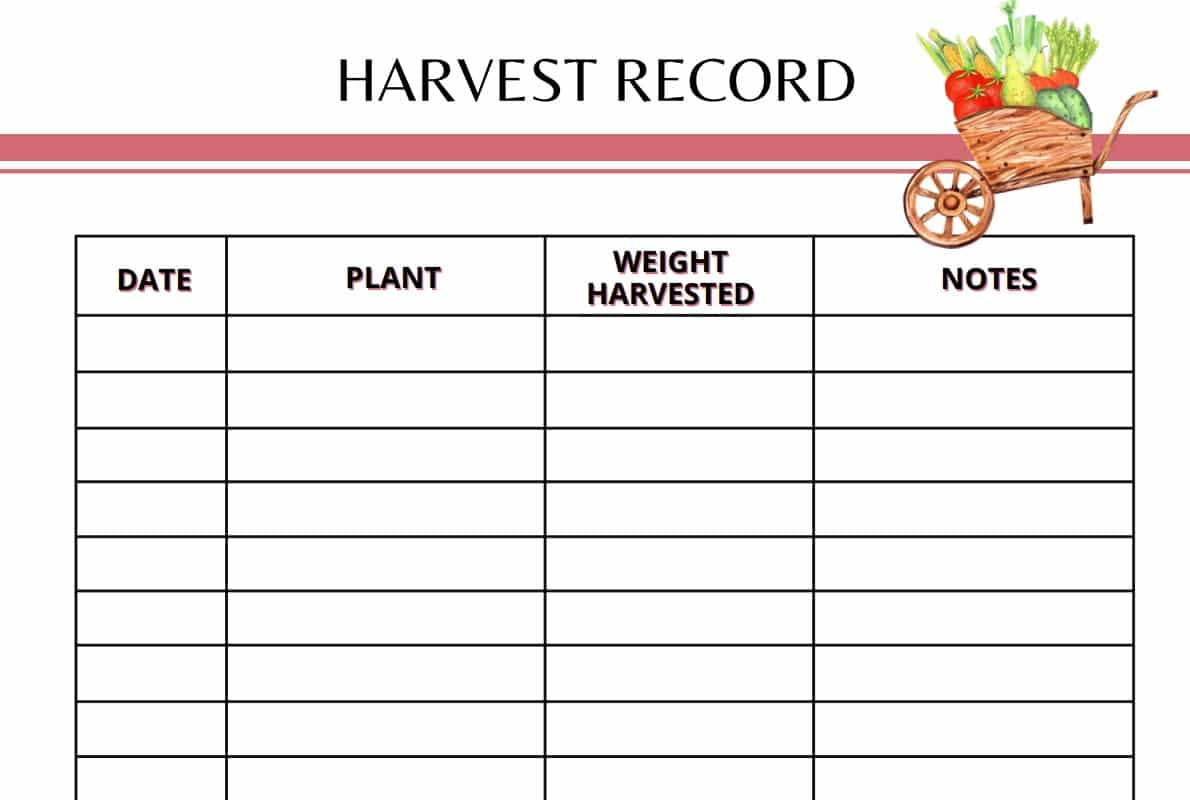
Plant
The plant, including the variety. This is where having a specific designation for each plant really comes in handy. A tomato plant in a polytunnel is going to perform differently to one without a cover. So specify where the plant is at the very least.
Weight Harvested
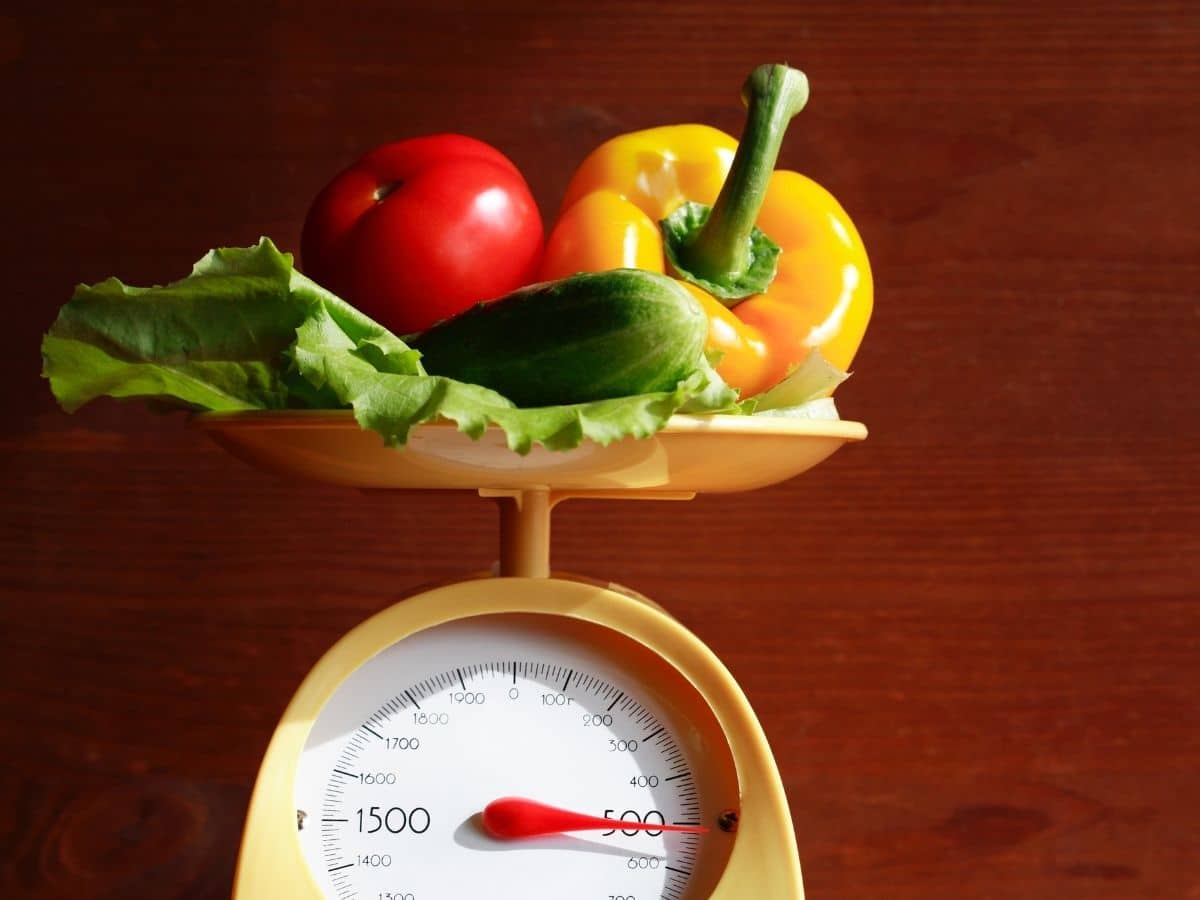
Make sure you’ve got yourself a little kitchen scale so you know how many pounds of food you’re getting with each harvest. This will allow you to compare other harvests from that same plant as well as harvests from other areas of the garden where the plant might be performing better. Remember, gardening is all about experimenting and finding out what works best for you.
Notes
When you’re harvesting you might want to make some notes on the size of the plant, if you lost food to rot, or any other observations you make while you’re harvesting. For the totals page, you might make yourself a note of if this is something you feel is worth growing again or not.
Future Garden Ideas
The Future Garden Ideas page is for that gardener who is always looking ahead to the next gardening season. What will you do differently? Did you see a plant in a Youtube video that you want to try growing? This is where you make notes to help you out in the years ahead.
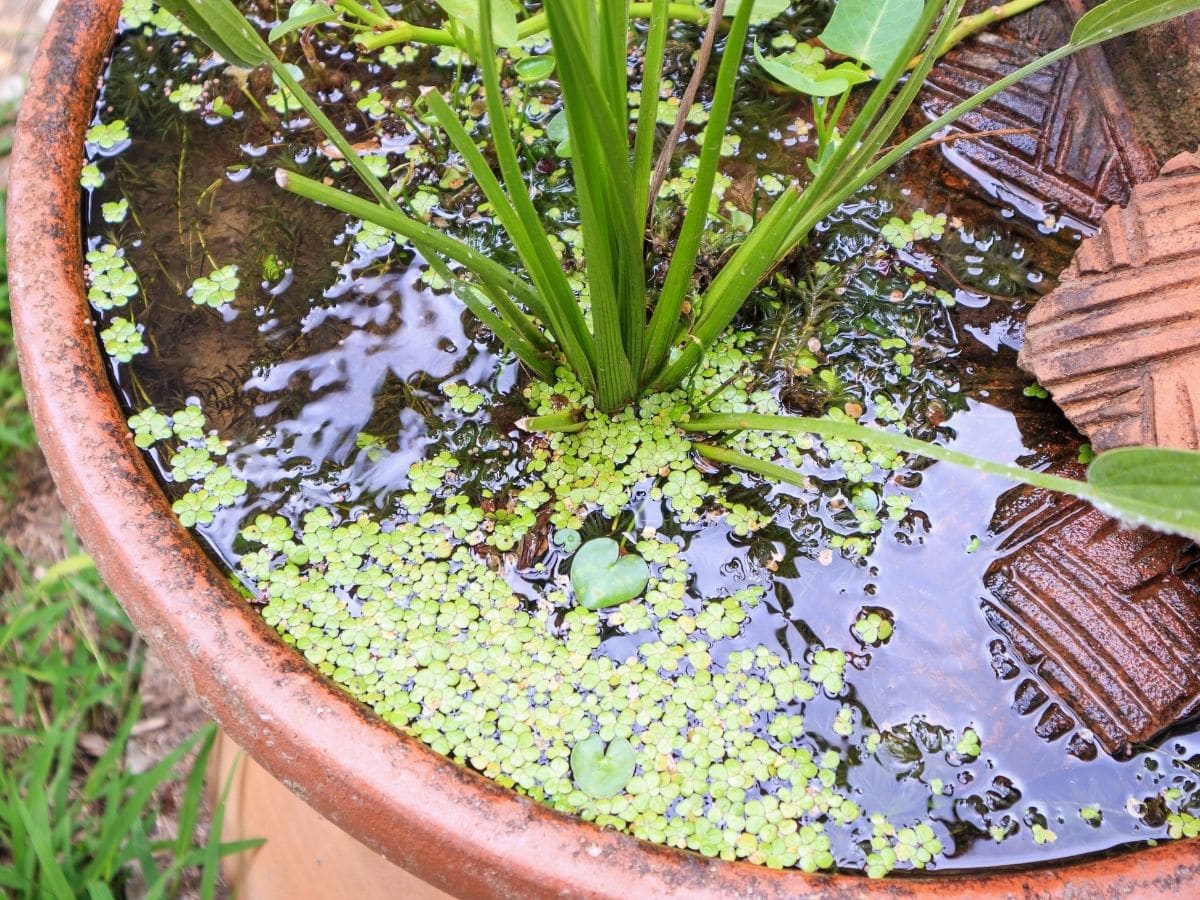
What Worked
Was there something in your garden that did surprisingly well? Write it down! Write down the details of where it was planted and what worked so well about it. This will help you when you start planning your garden next year. After all, if it ain’t broke, don’t fix it.

What Didn’t Work
This is where you write down the things that didn’t go so well. Maybe there was a surprise frost that killed all your seedlings, or maybe you had a massive aphid problem in one particular raised bed. Write down everything that didn’t go according to plan so you can be ready next year and prevent it from happening again.
Garden Wishlist
This is where you get to dream. I like to split the wishlist square in half. In one half I write down all the varieties of plants and things I would like to grow in next year’s garden. The other half is for tools, garden accessories, or really anything that isn’t a plant. Anything that I didn’t buy throughout the year that I had on the Garden Wishlist page will go here. This section will make up next year’s Garden Wishlist page.
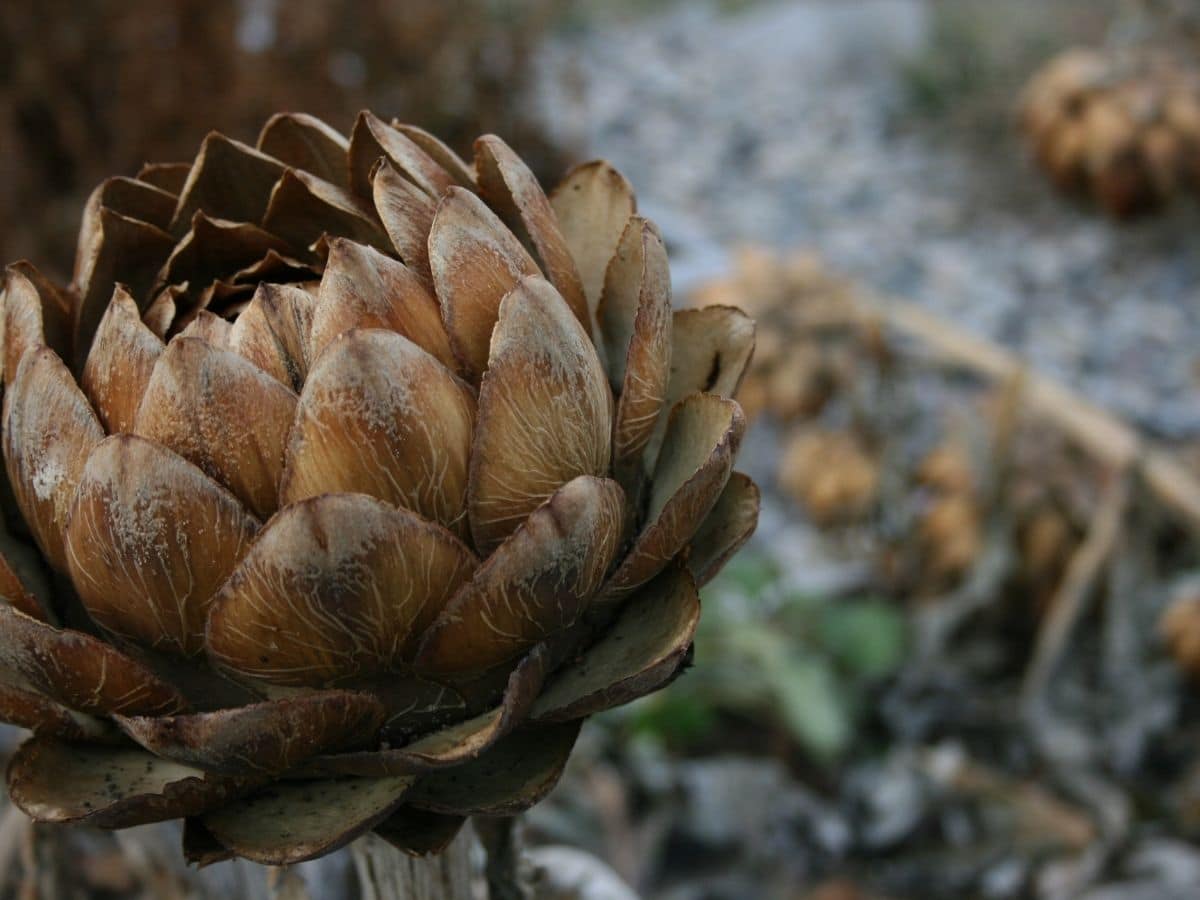
To Remember
The To Remember section is for anything that happened in the gardening year that you want to remember. It might be that time you walked out to find a plant totally covered in butterflies or the time when one of your little helpers decided to give tomatoes a prune…down to the ground level. This doesn’t have to be for anything important, it can just be for memories. Or it can really be anything you want to remember. Keep in mind that you are going to forget a lot more than you think you will.
Other Notes
This is where you leave yourself any other notes. One of my favorite notes is “Don’t start seeds until March 1.” I put this at the top every year because every year February comes and we have a few warm days and the gardener in me wants to come out and play. But I know. In my soul, I KNOW if I plant them then they won’t make it.
Your Garden Planner
We've finally made it! Now that you know how to use your garden planner just click the link below. It will open up as a PDF that you can save on your computer and print out as many times as you need! No need for your email address, no need to keep coming back...though do keep coming back! You'll miss out on all the great growing content we have planned for the future.


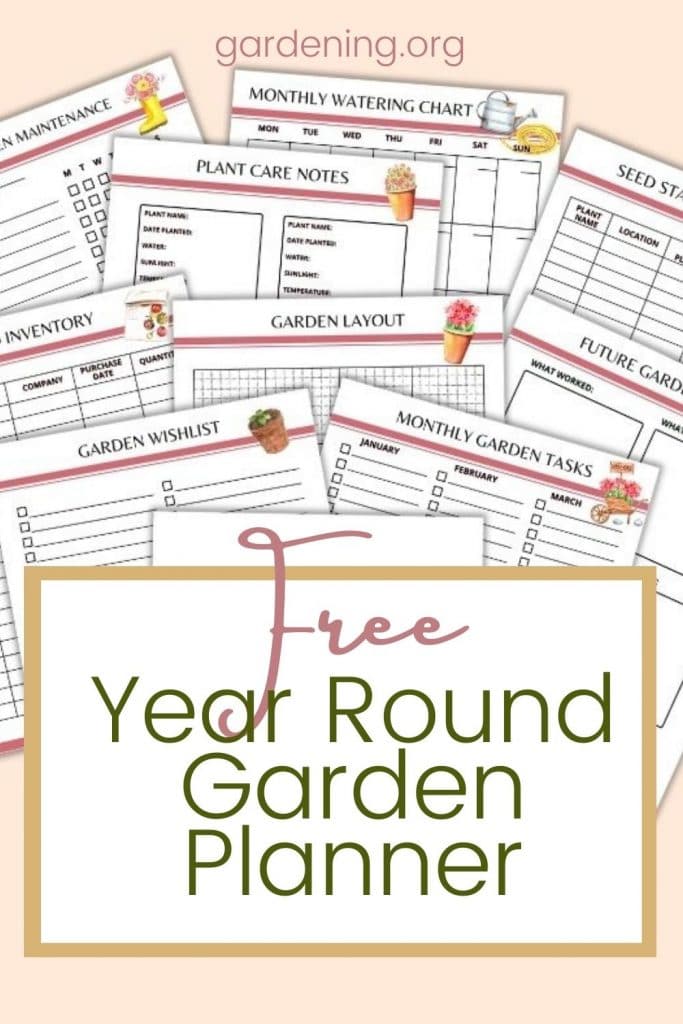

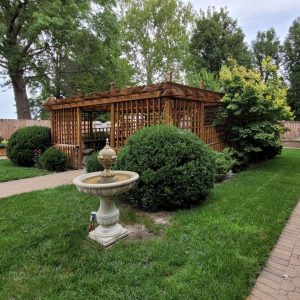
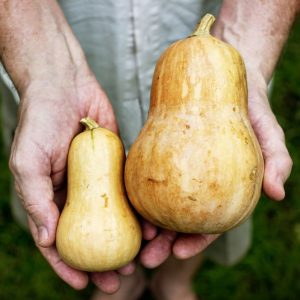
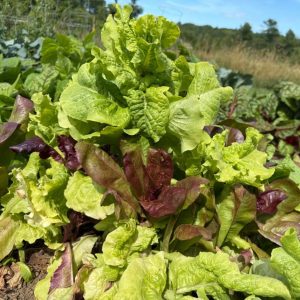
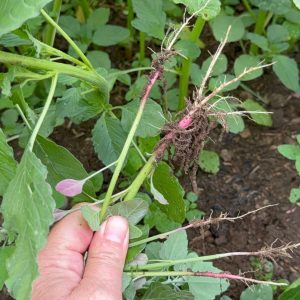
Danielle
What does the V and the H mean in the plant profile? Great planner by the way. I subscribed to page because of your attention detail. Thank you.
Mary Ward
Variety and Harvest (Date)